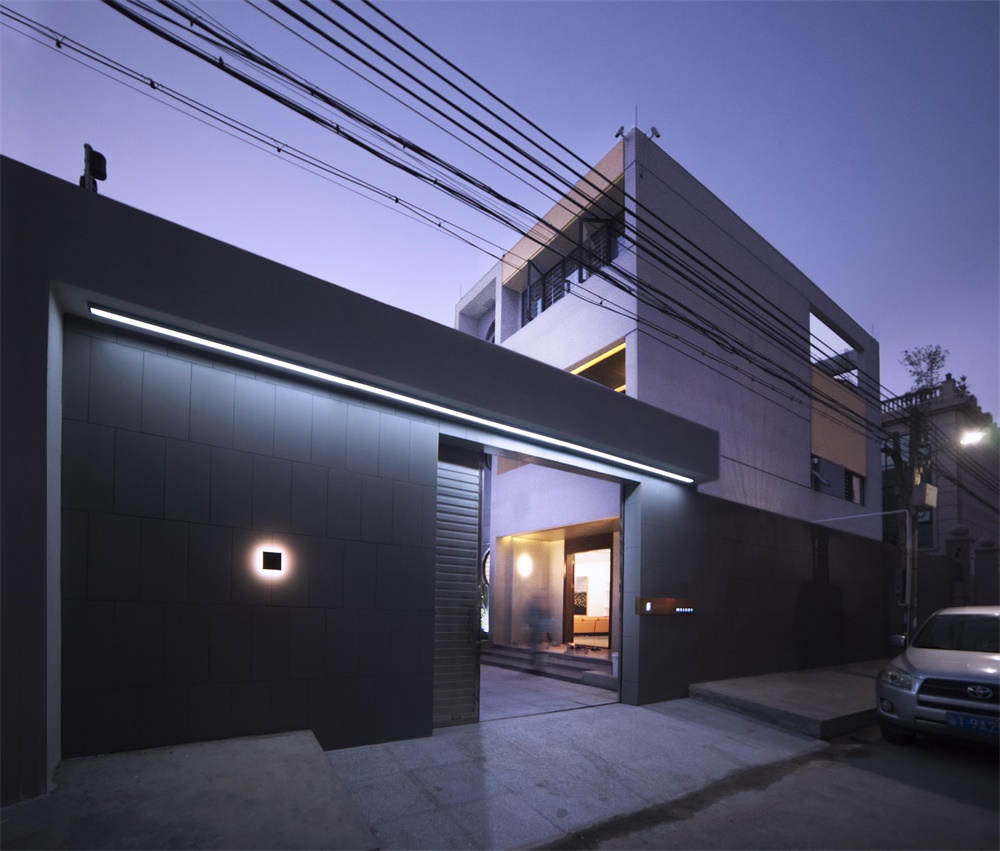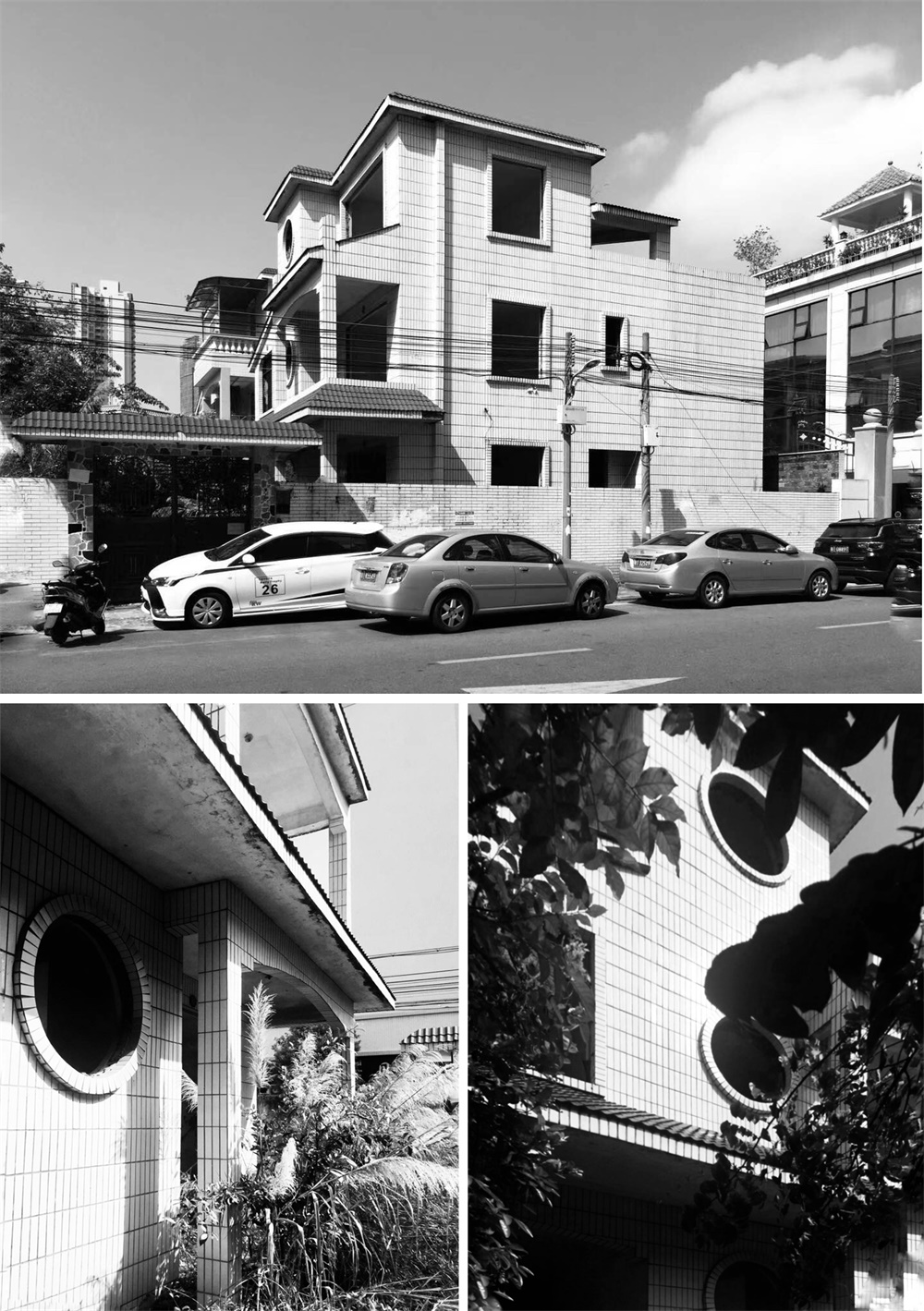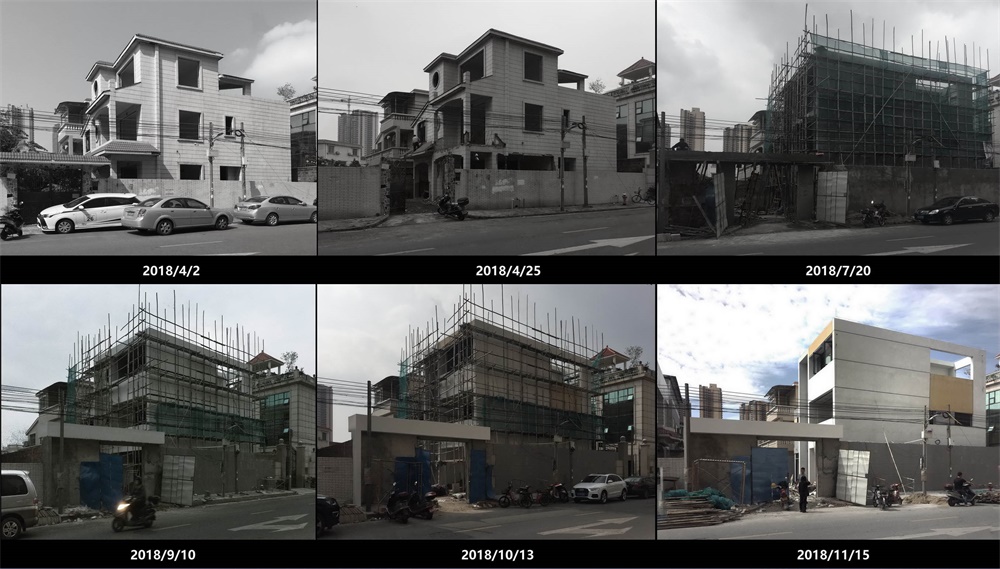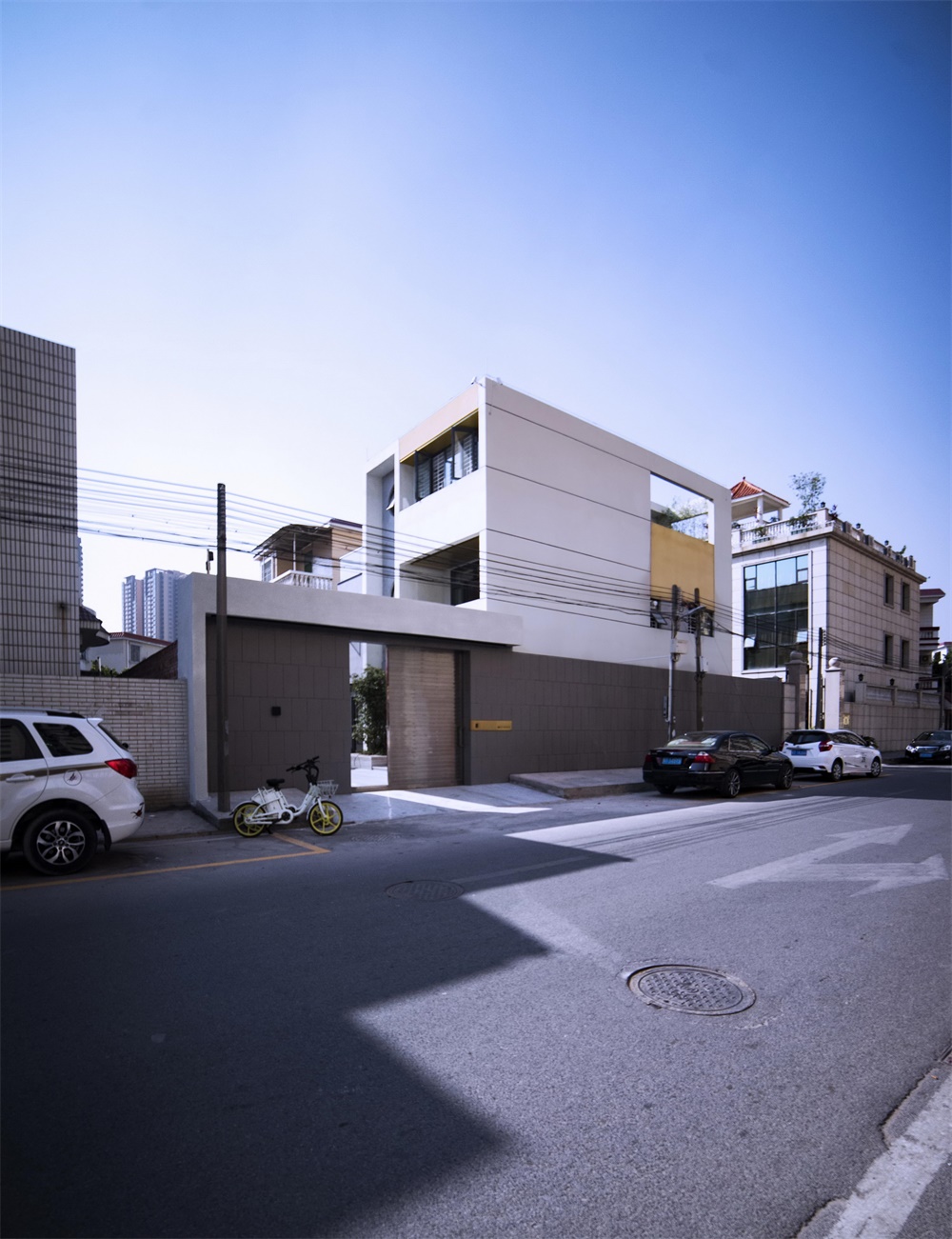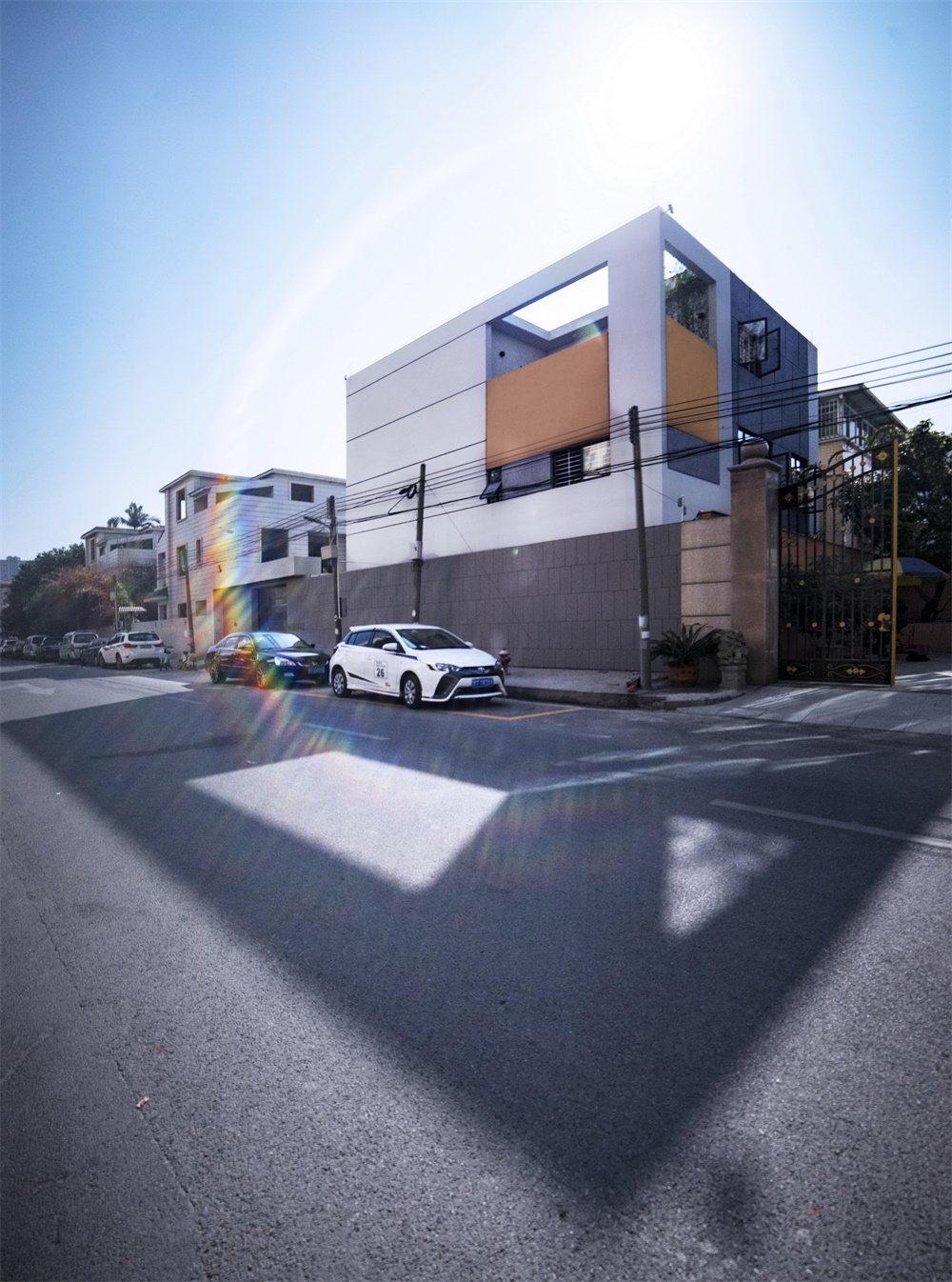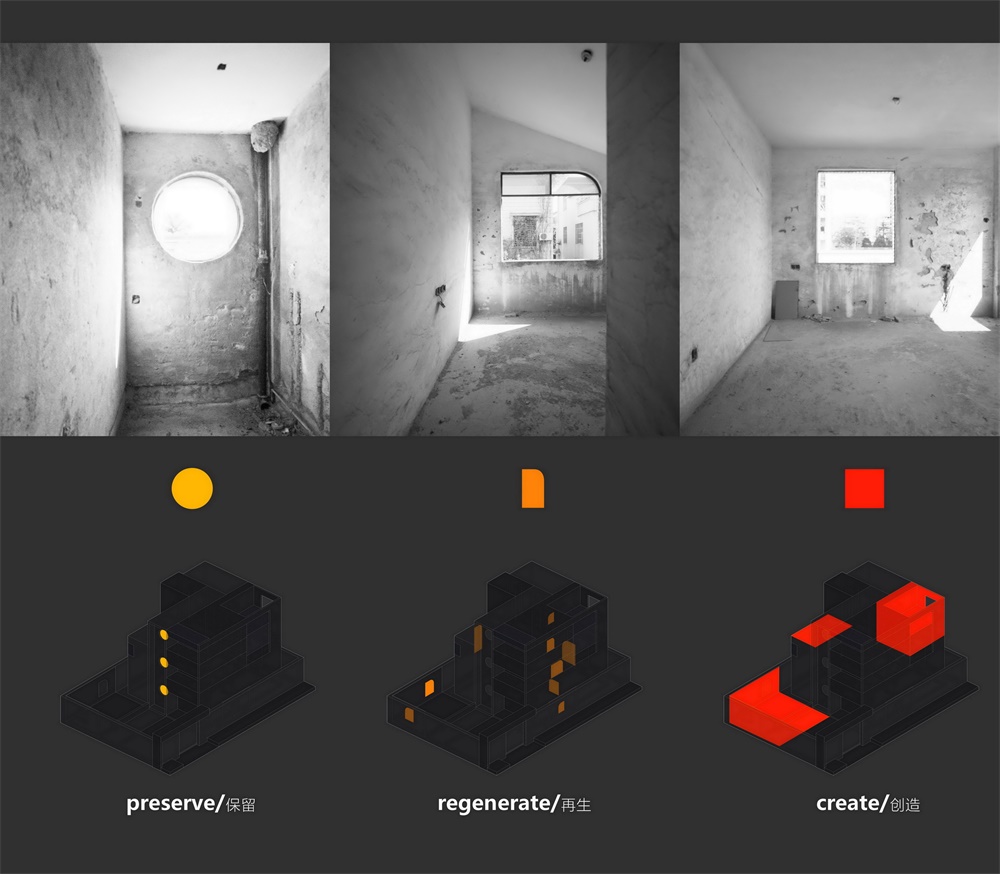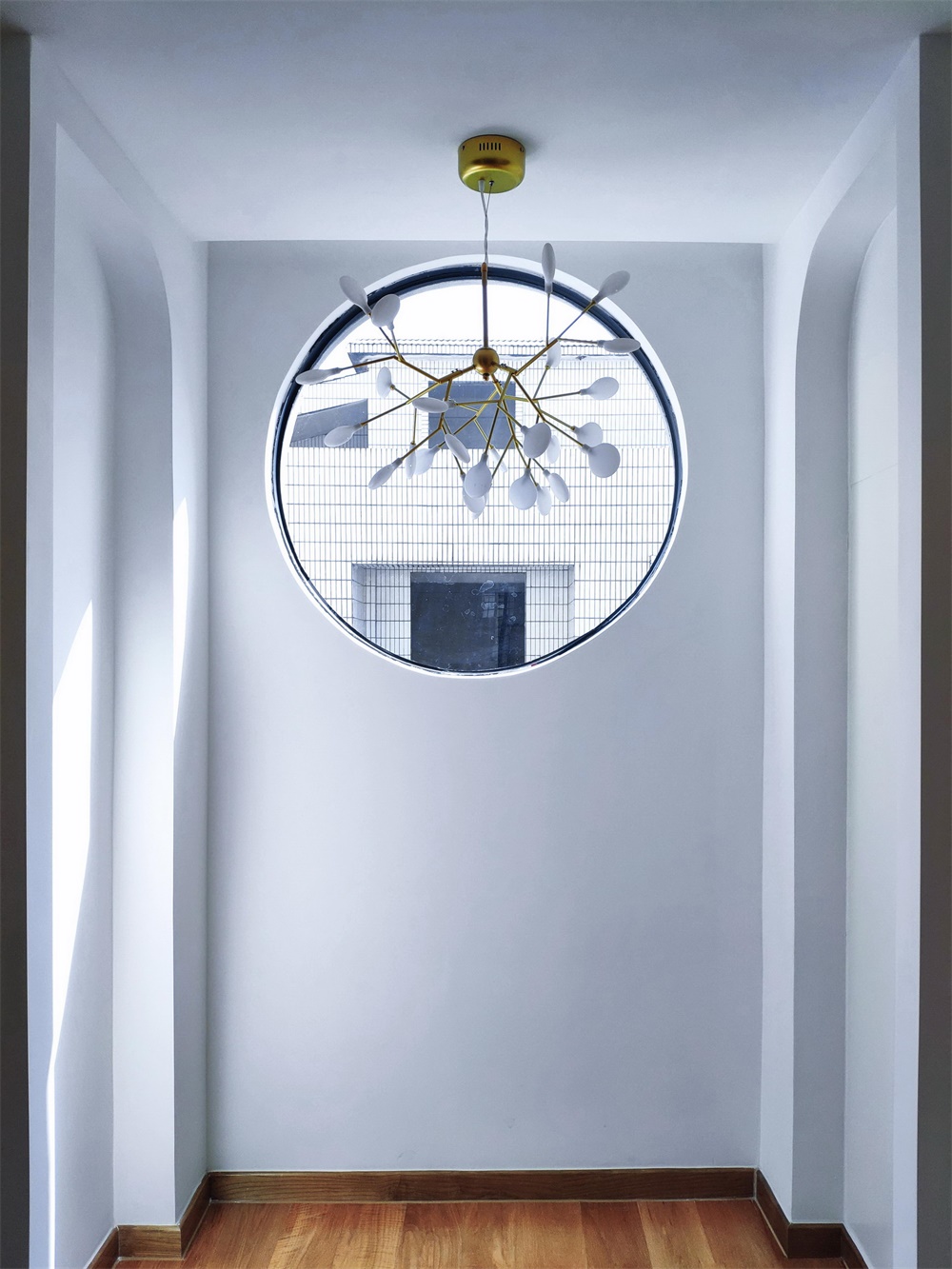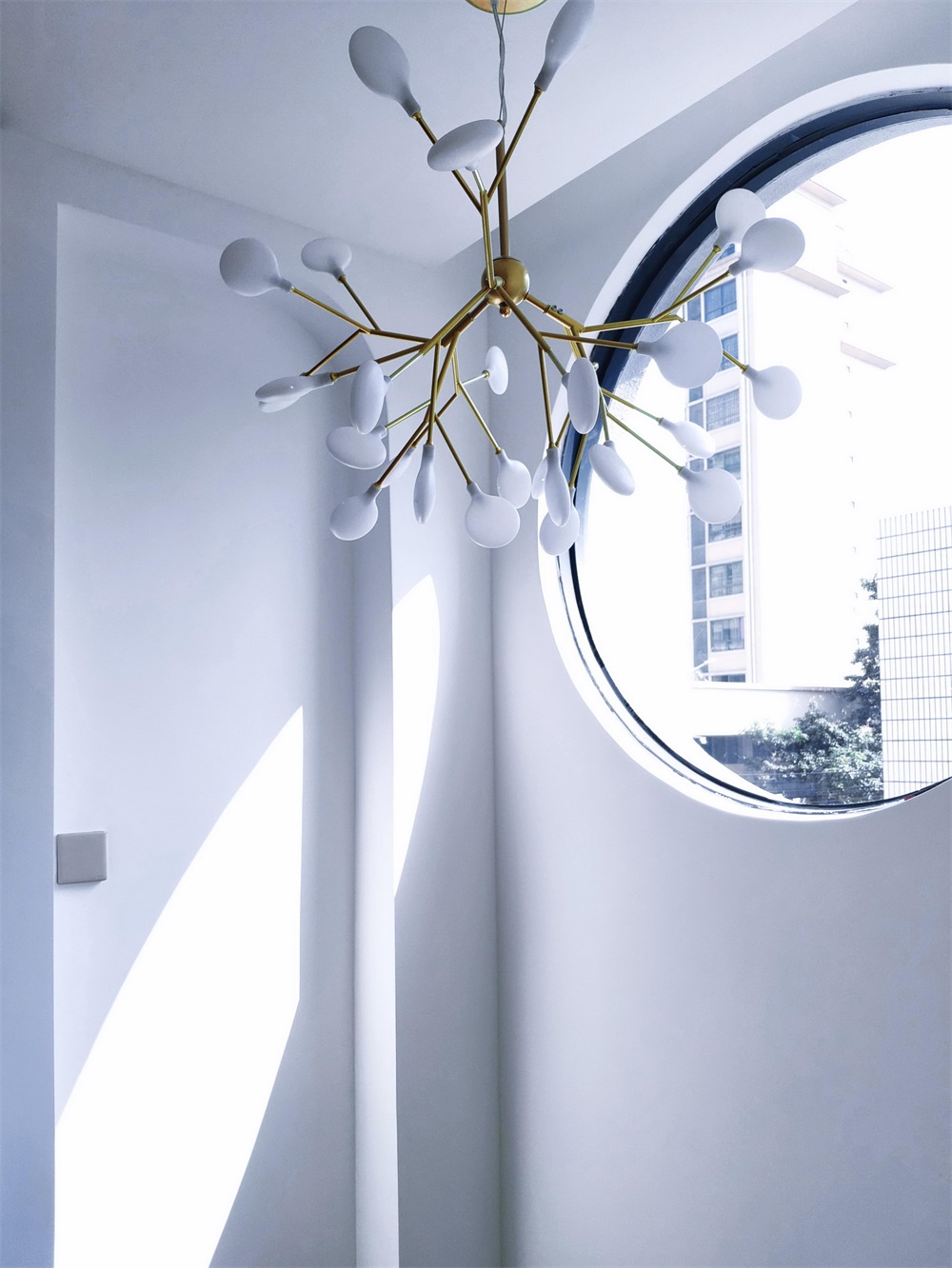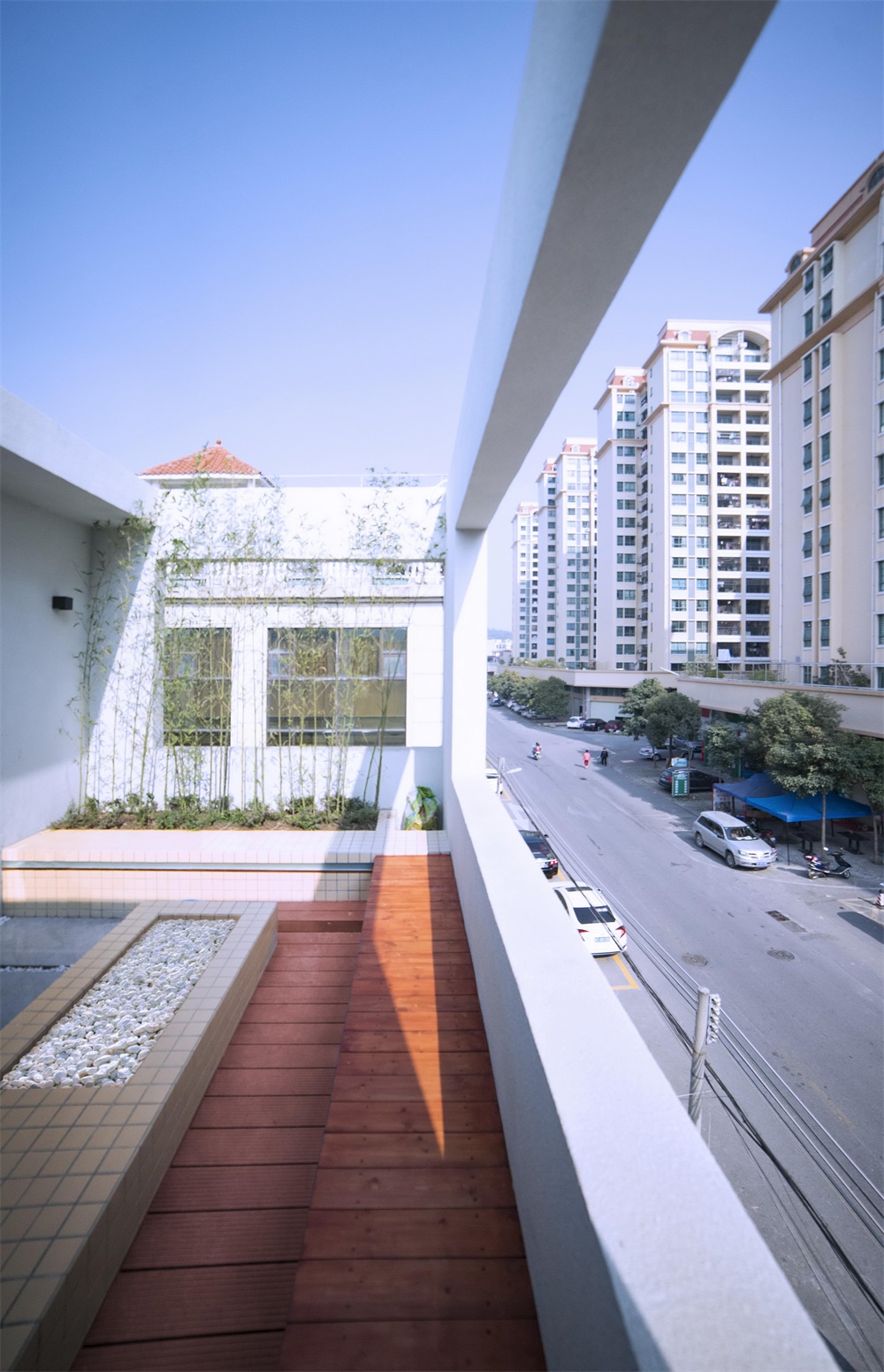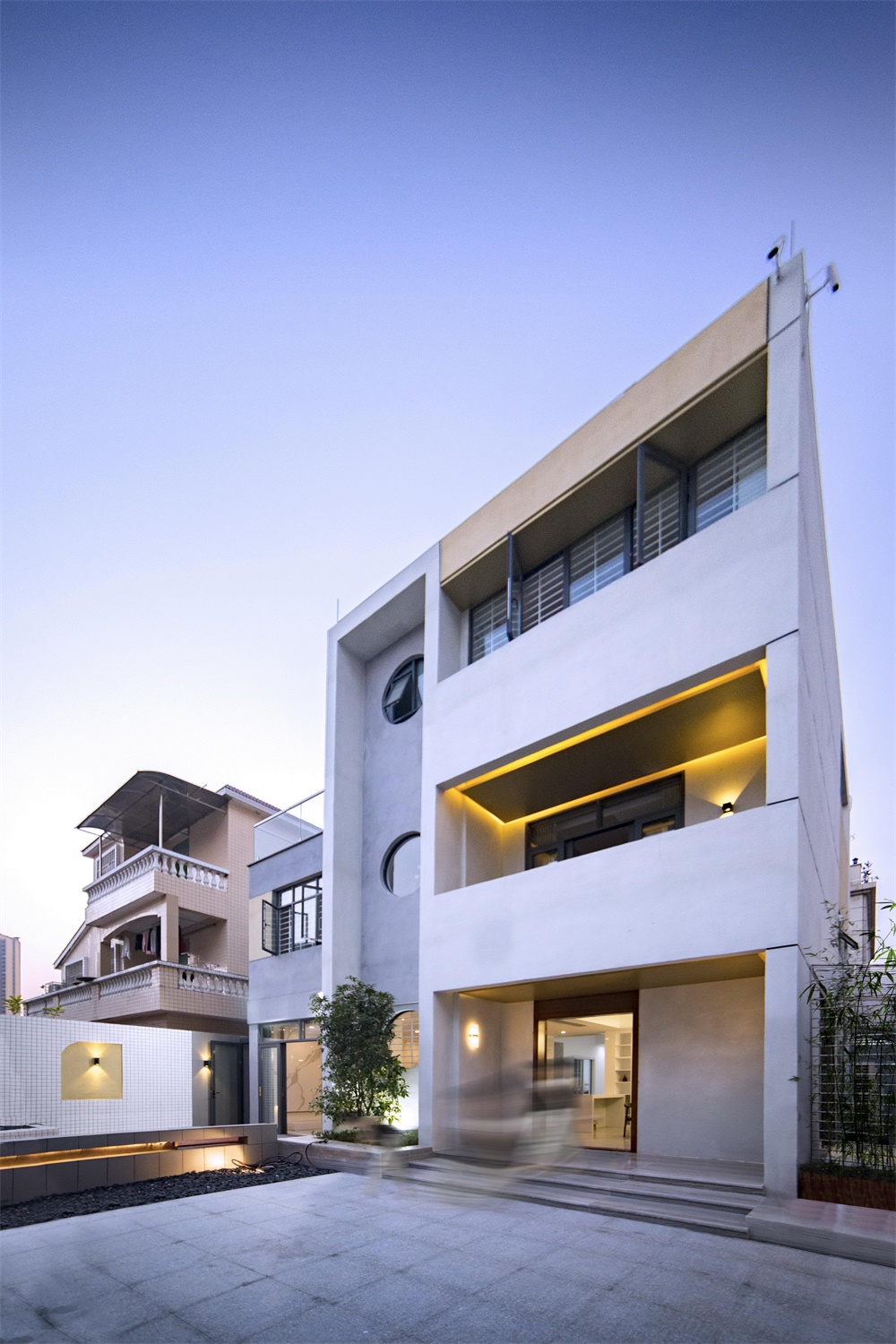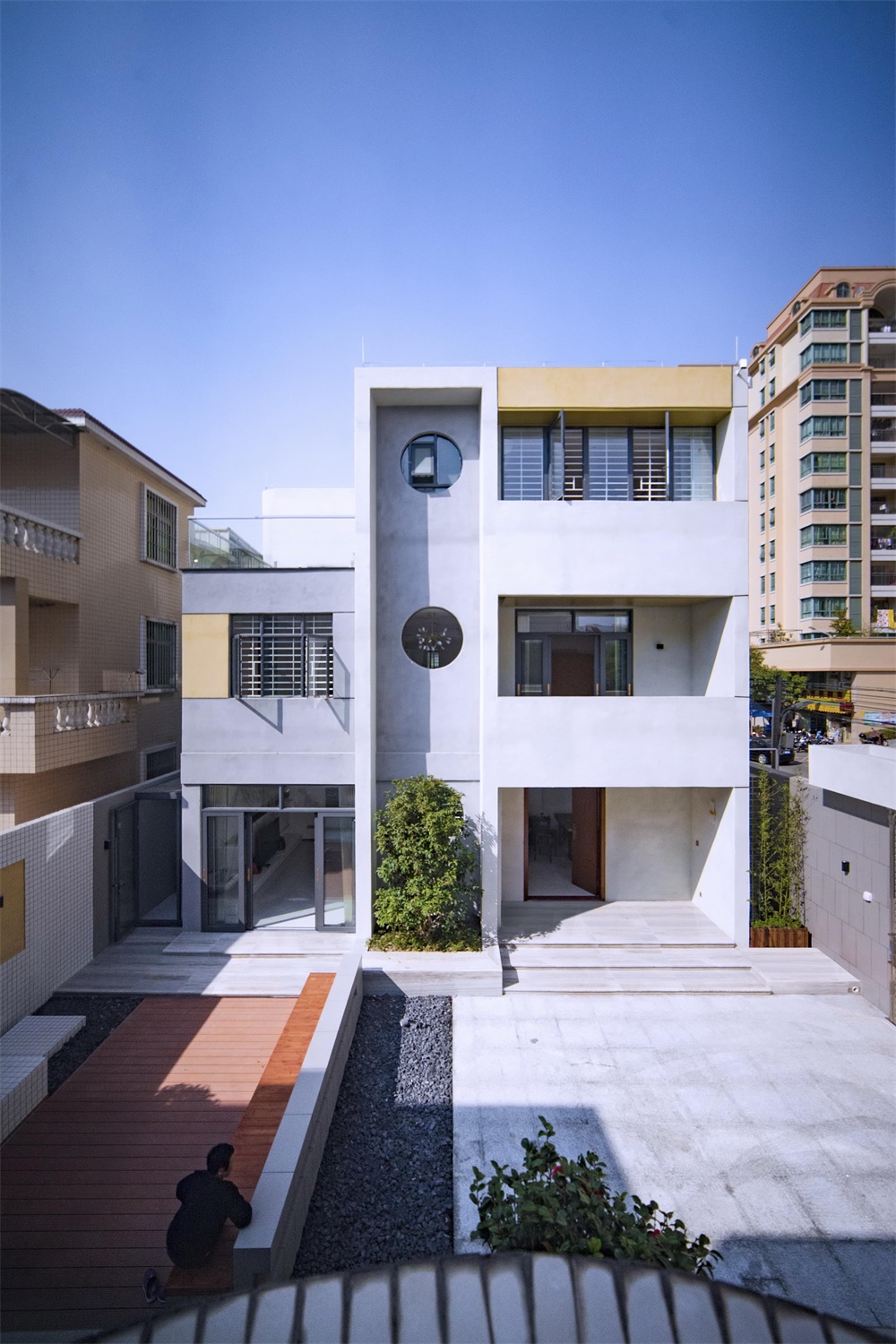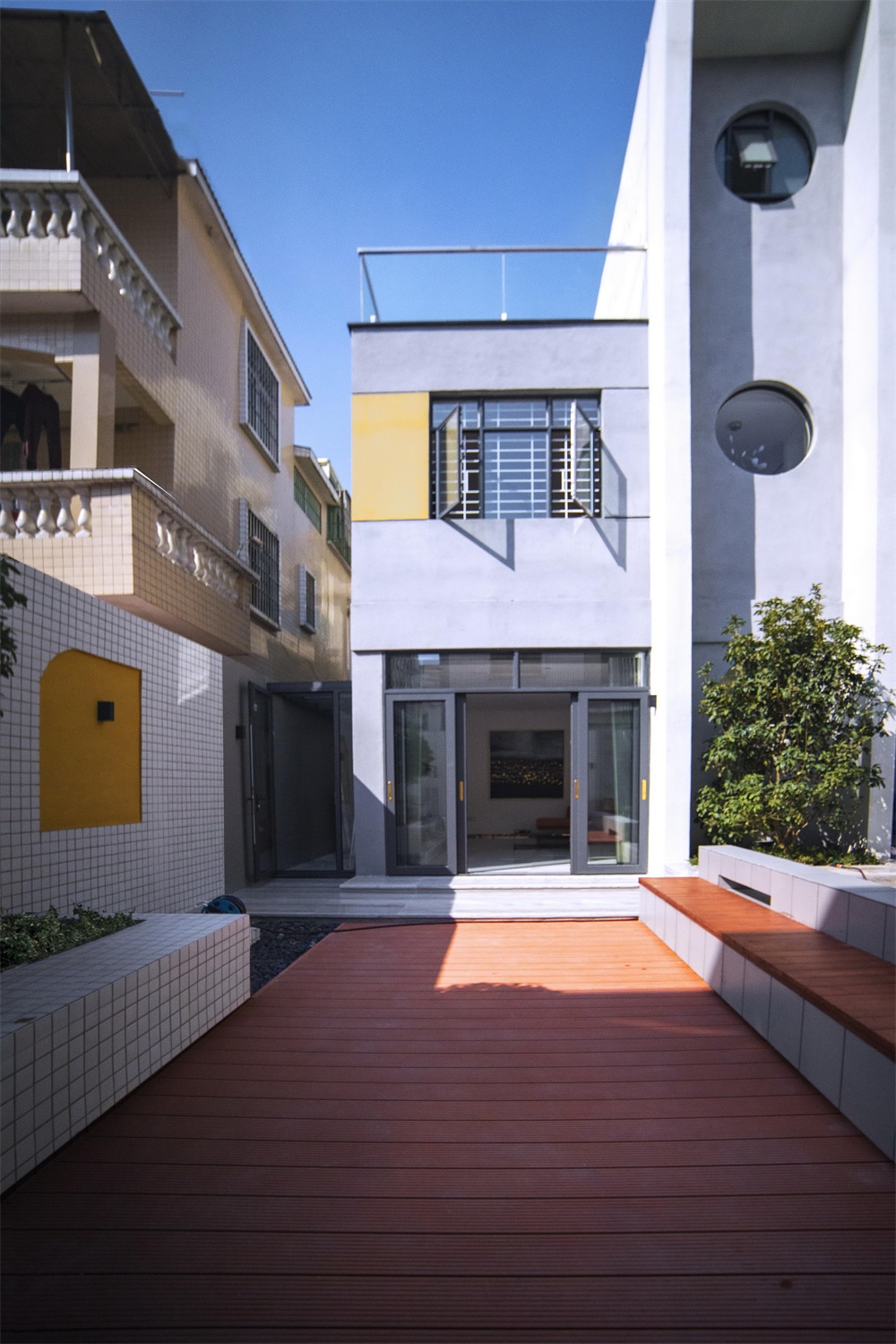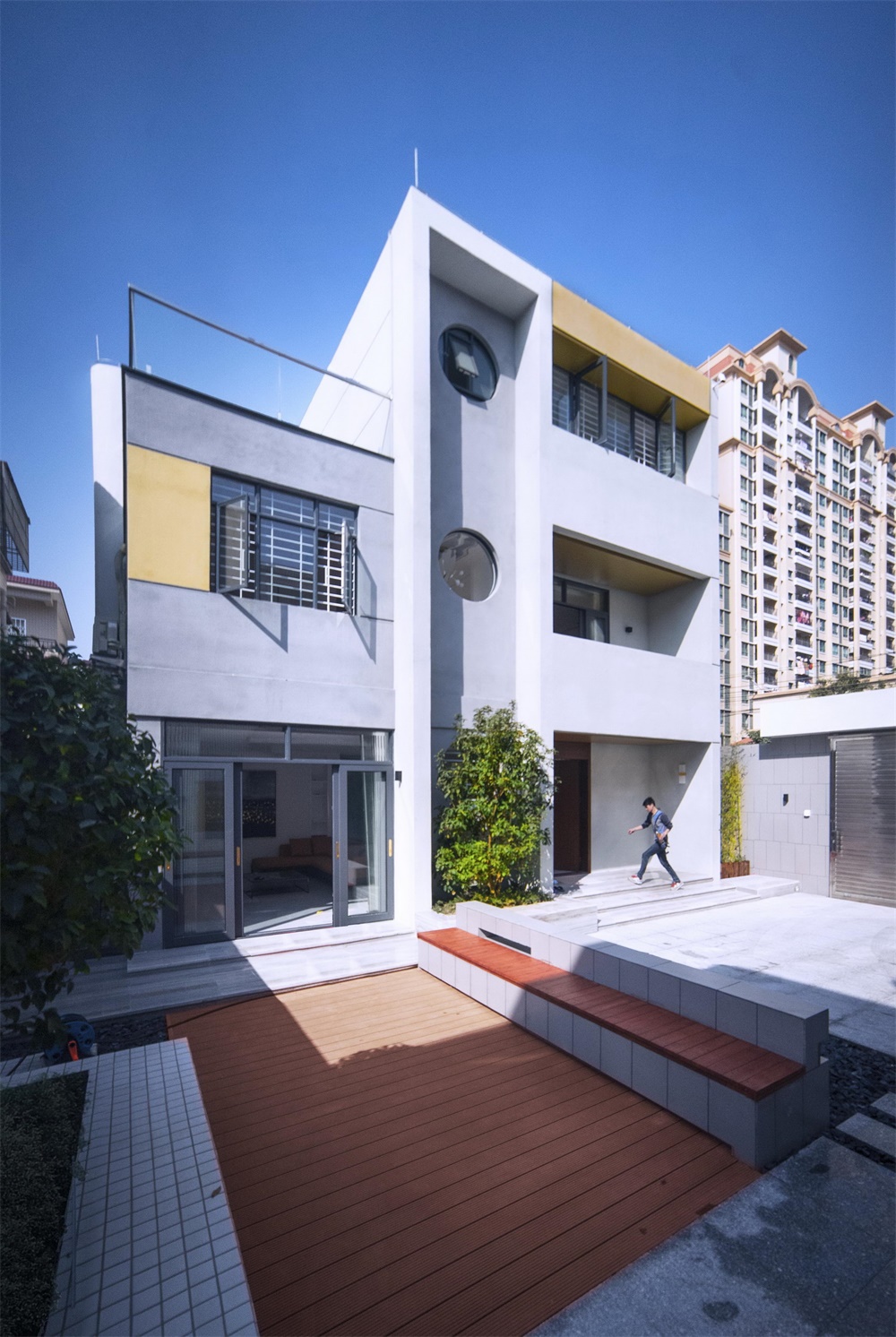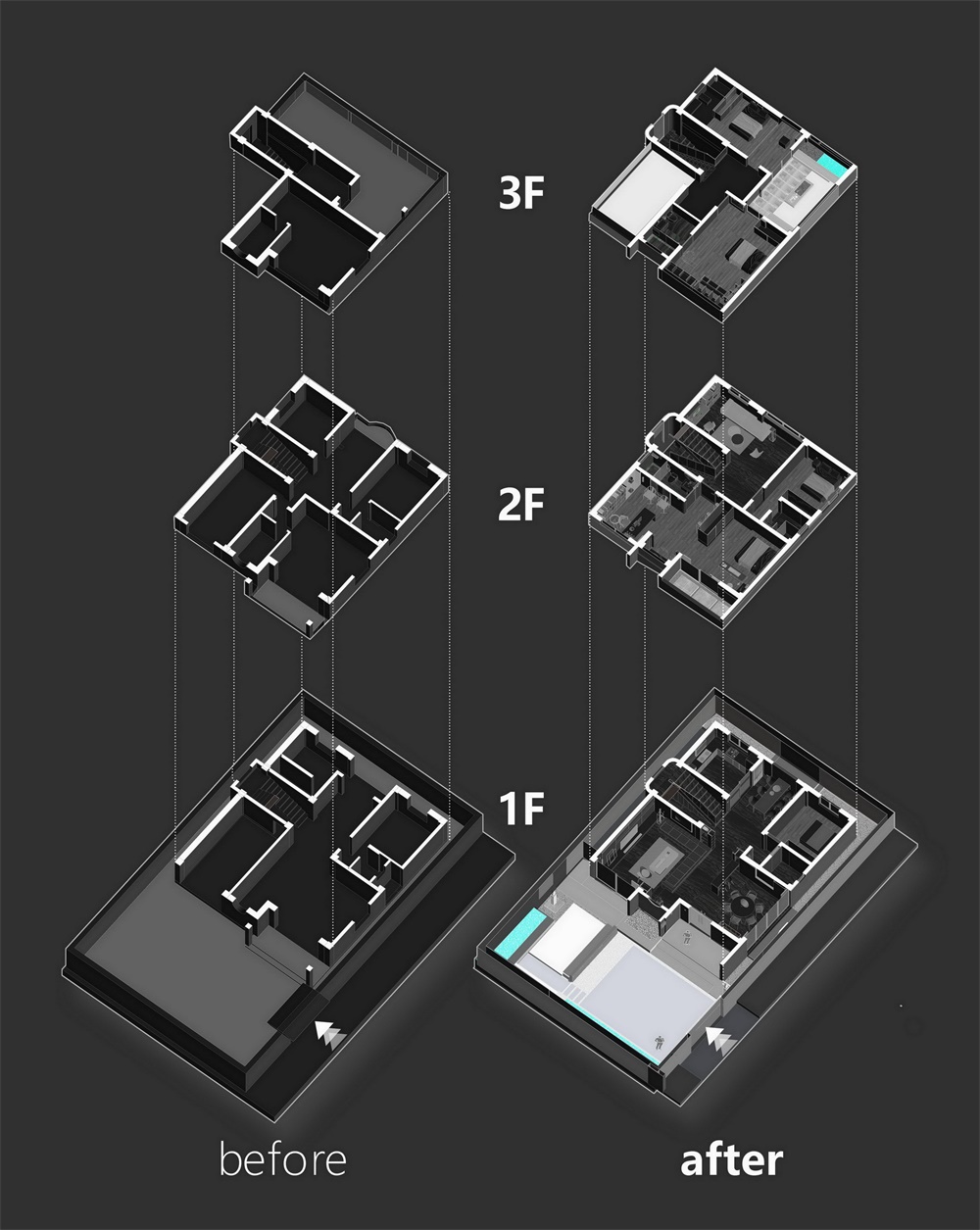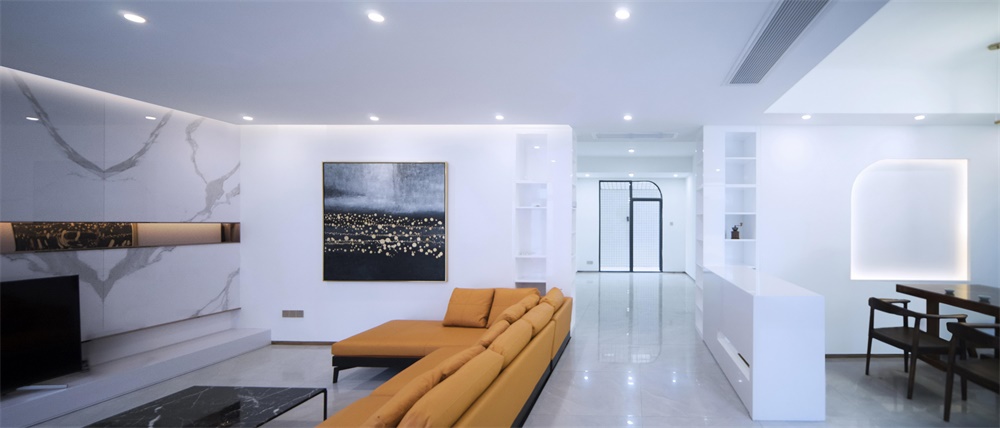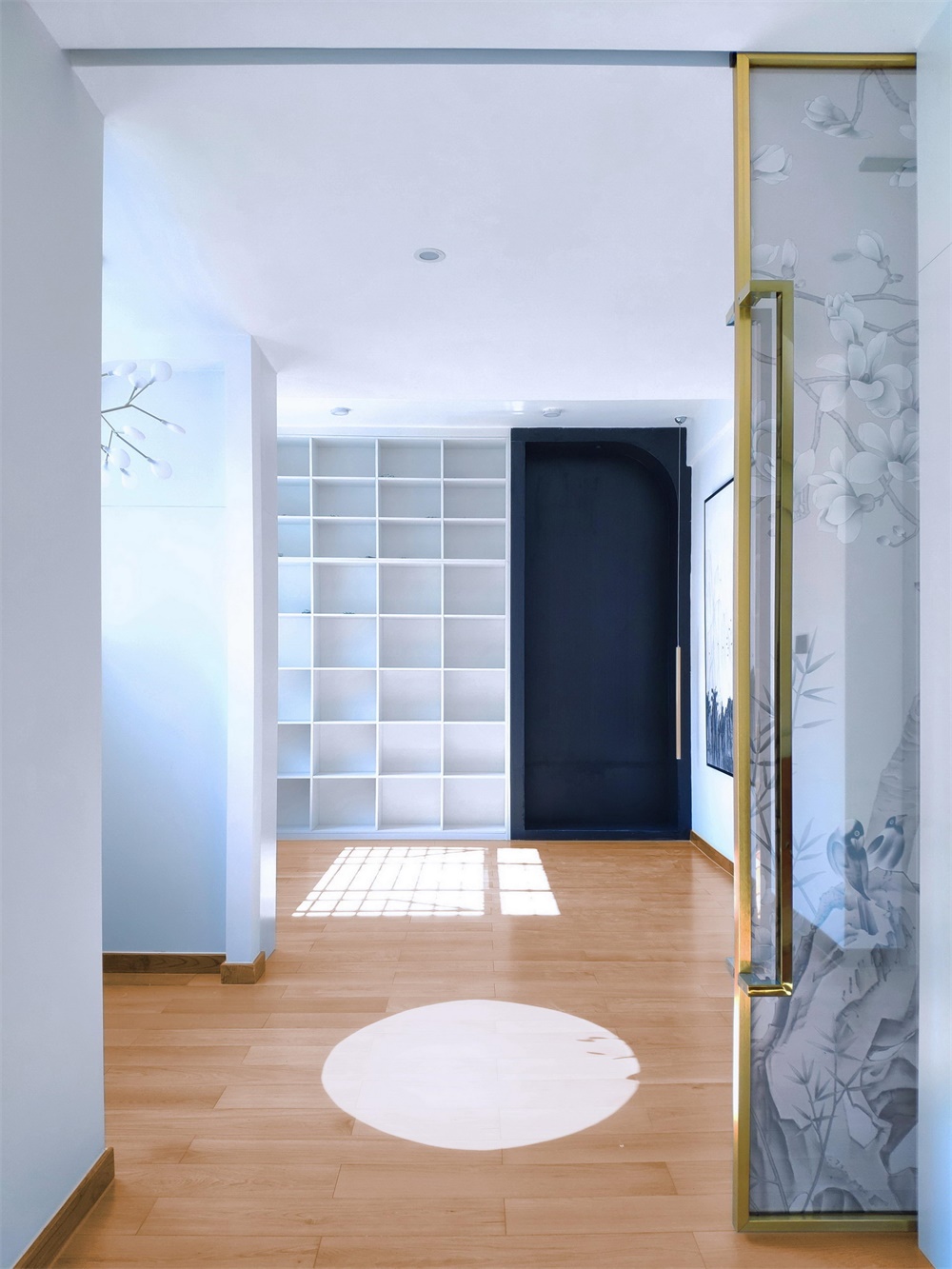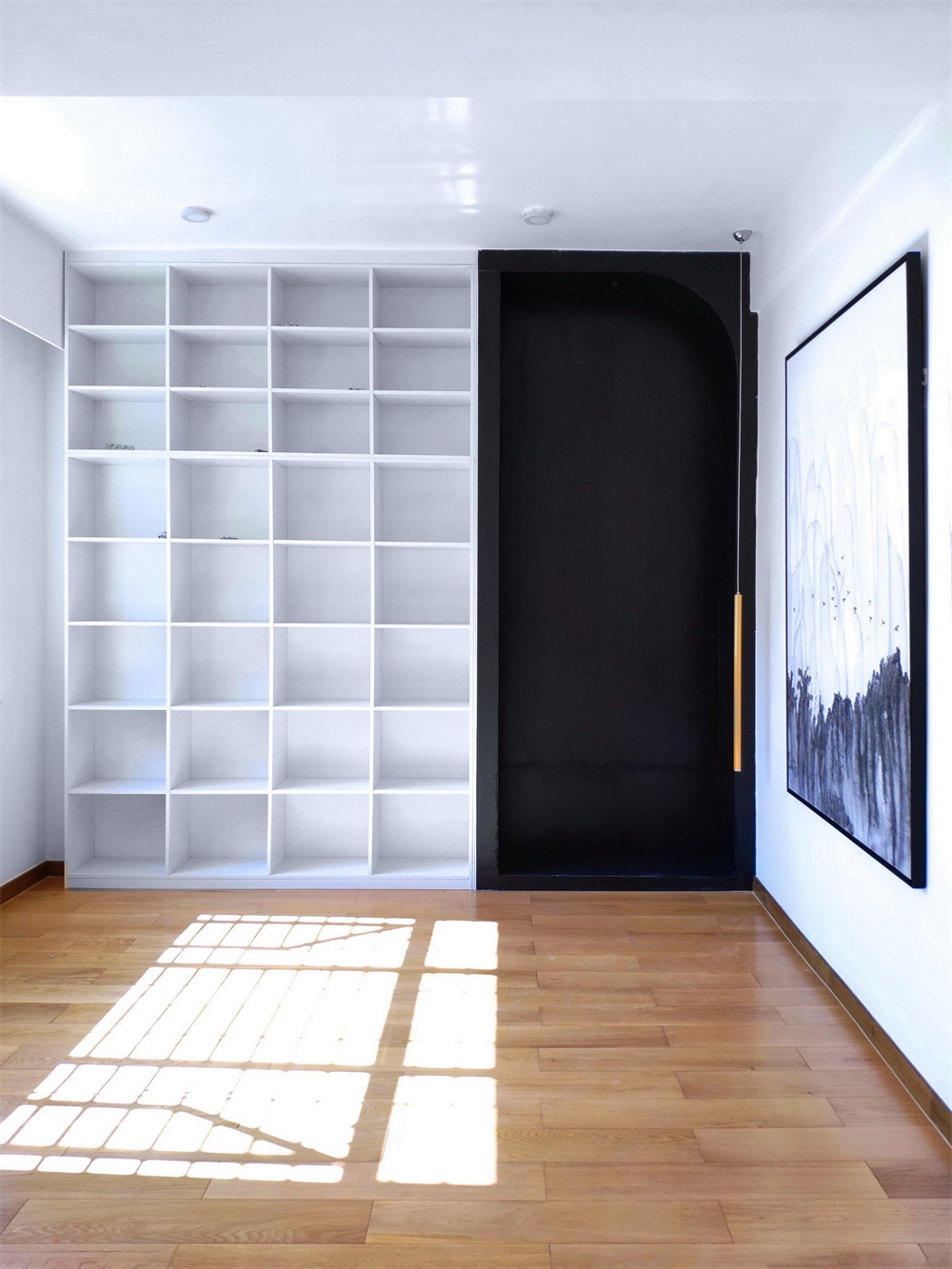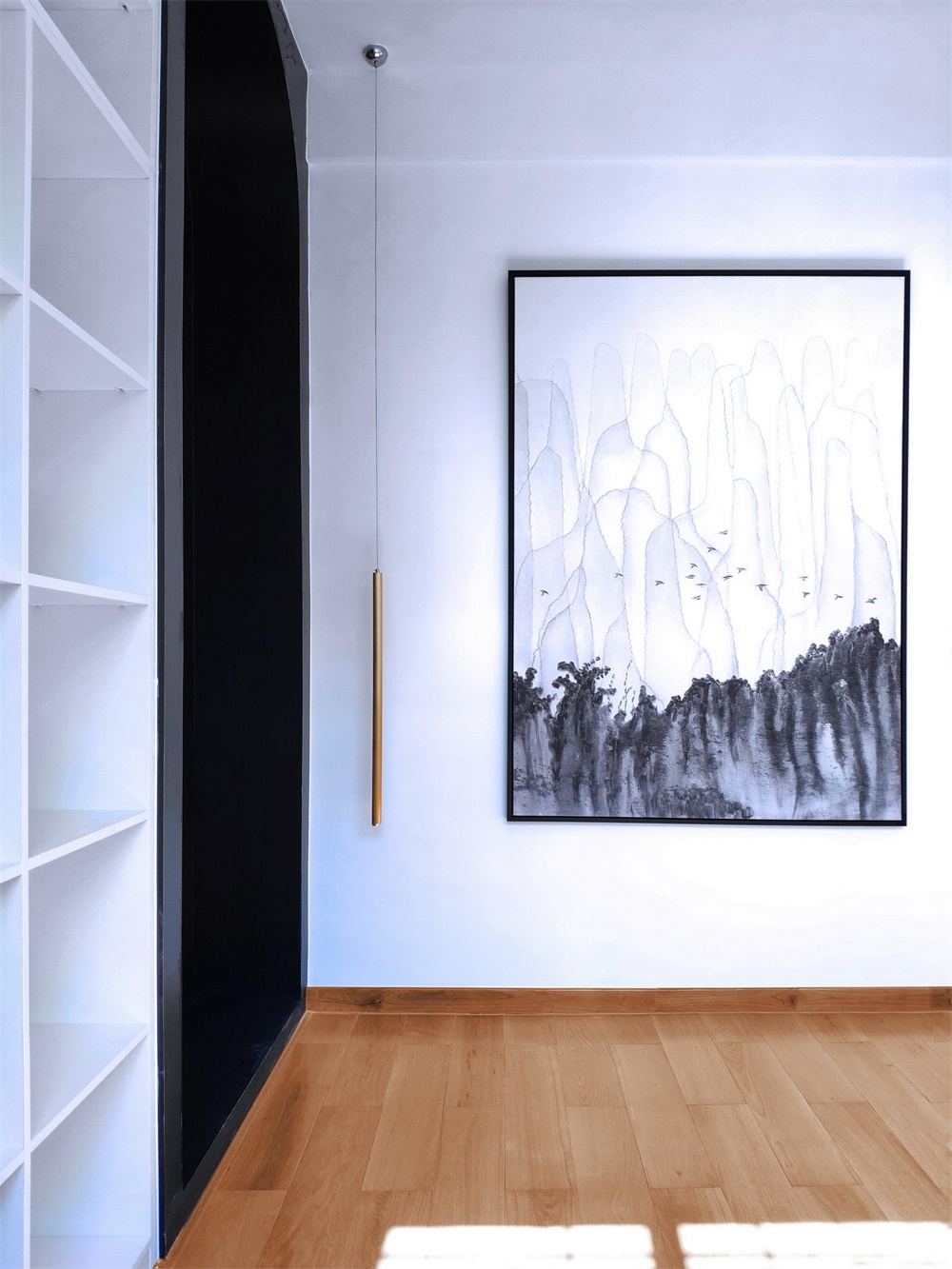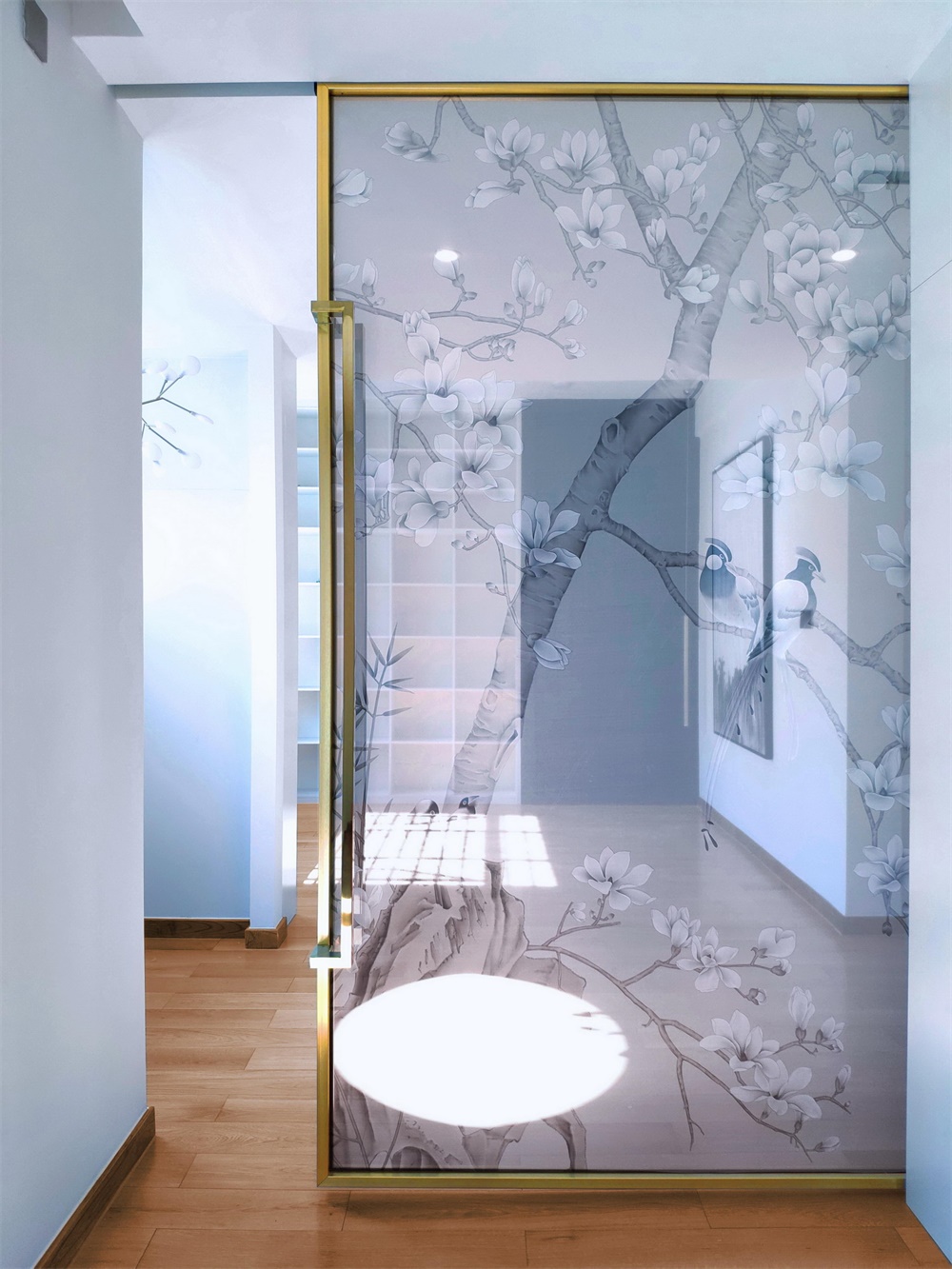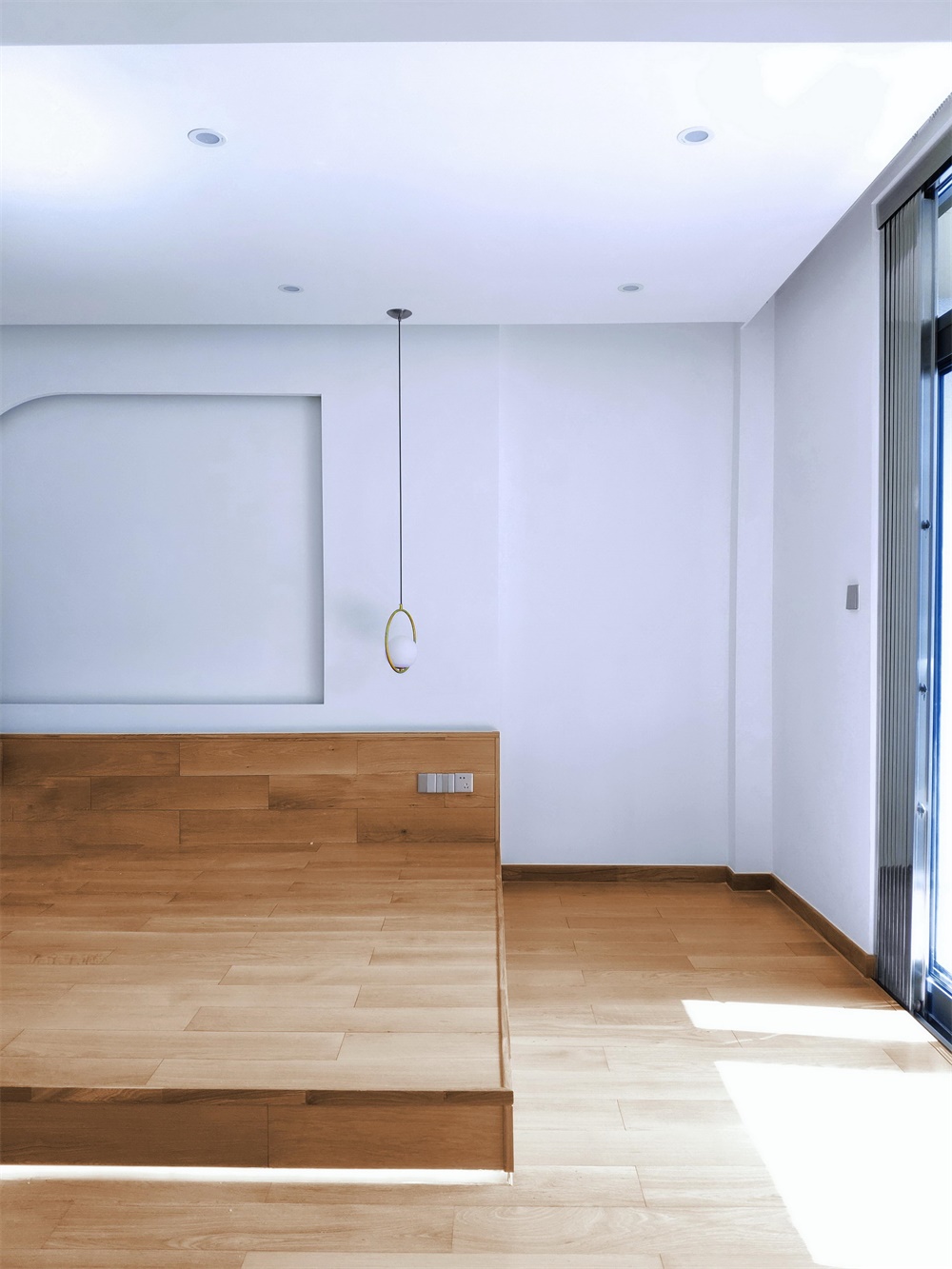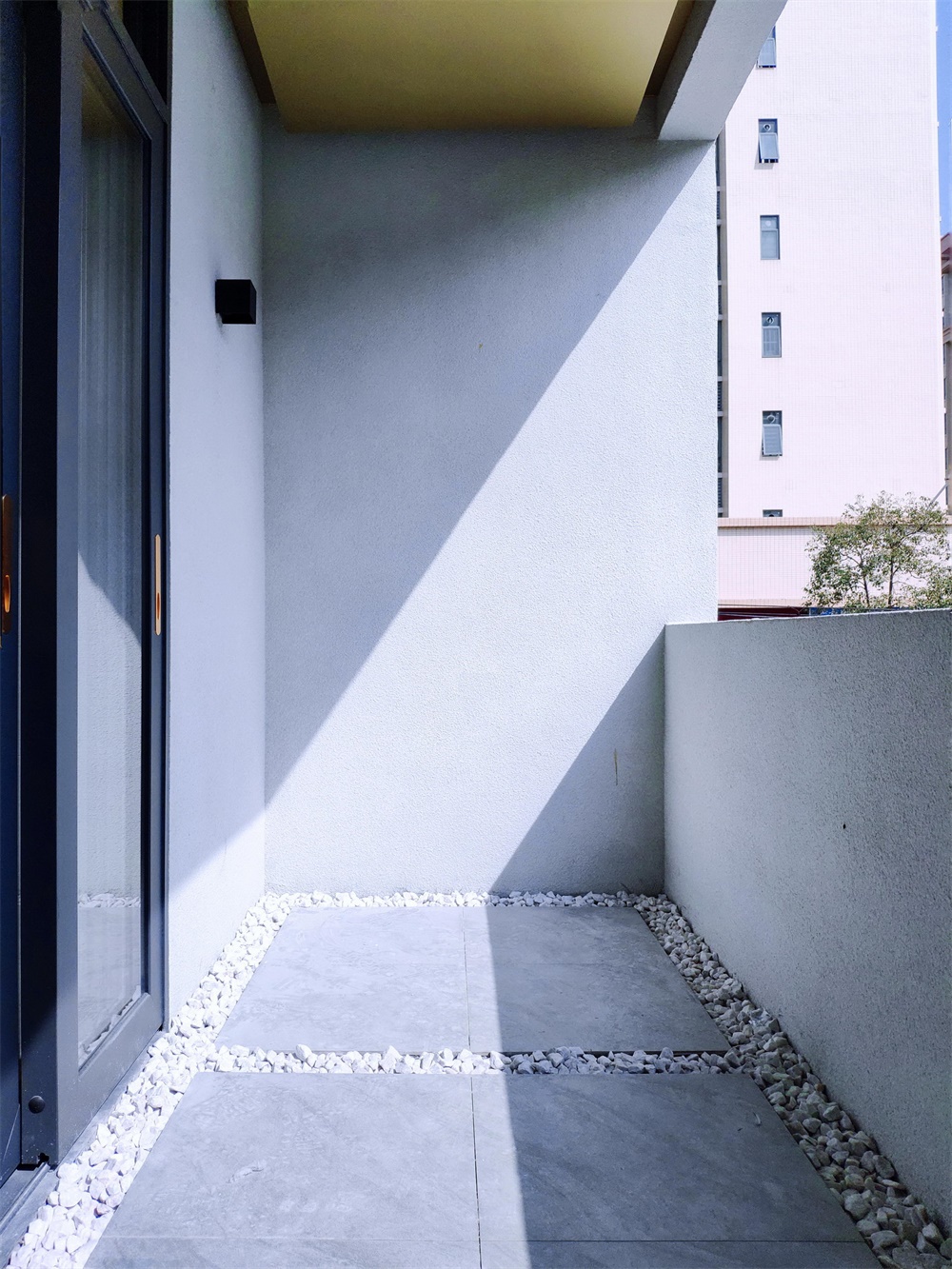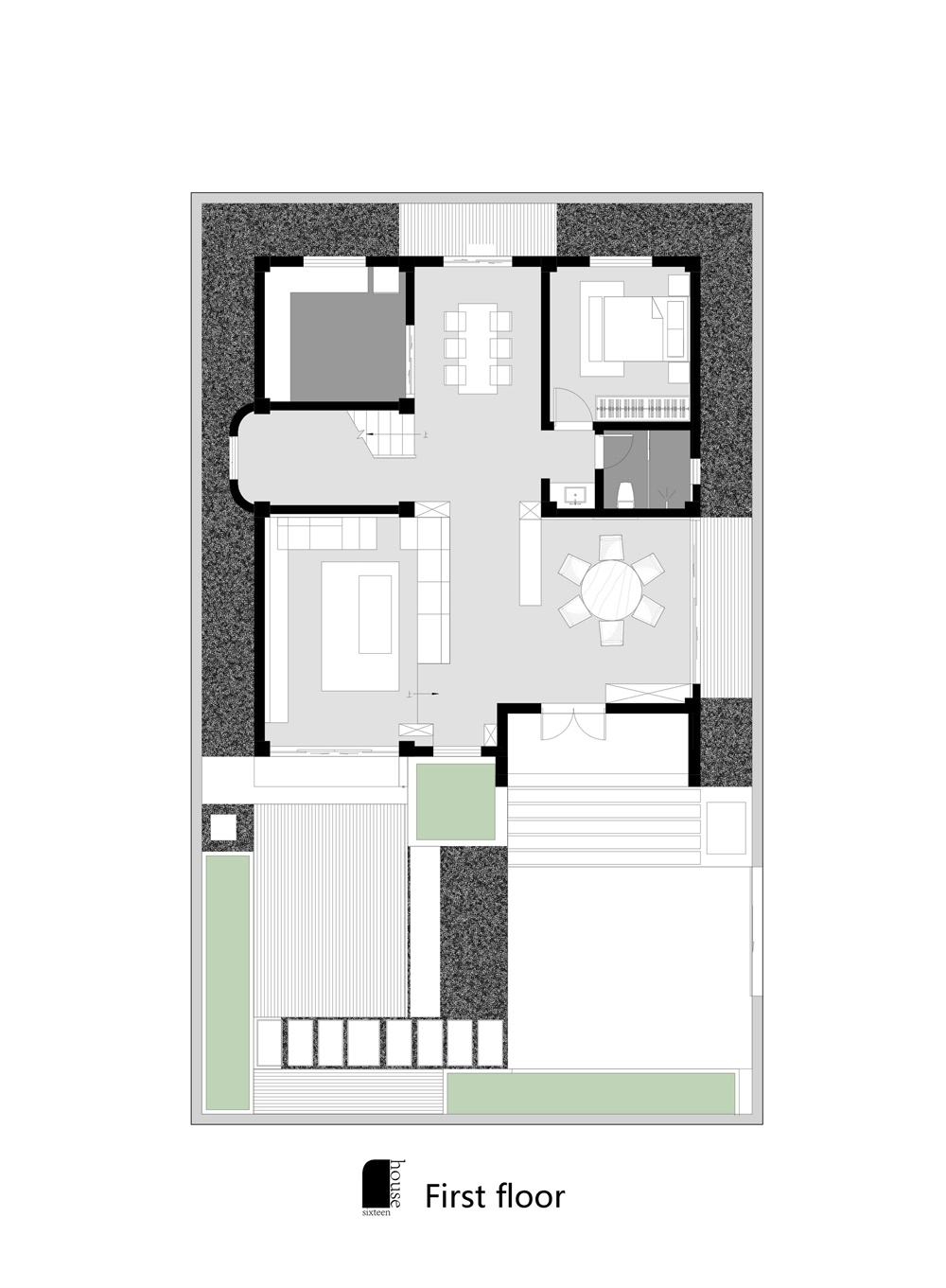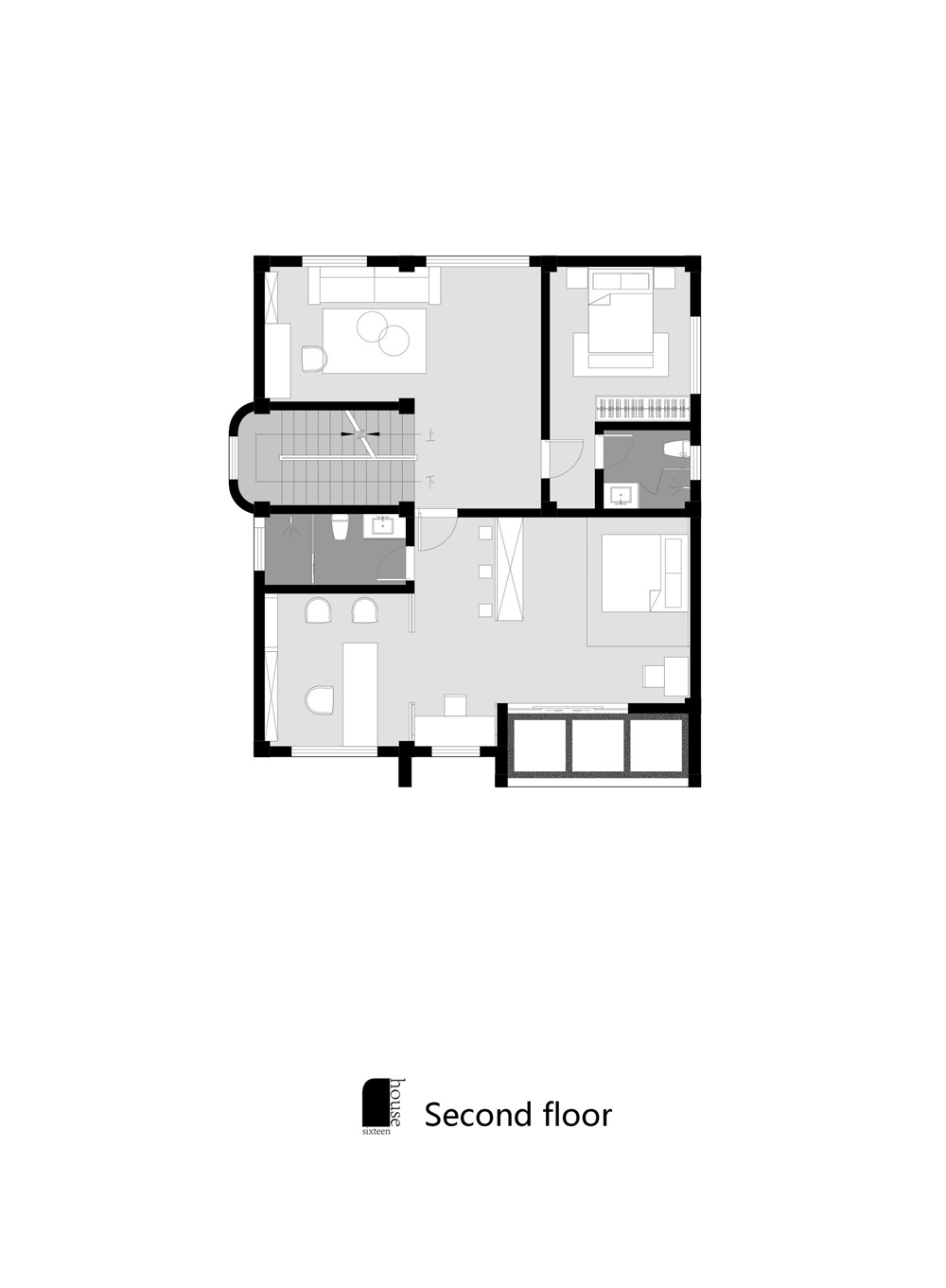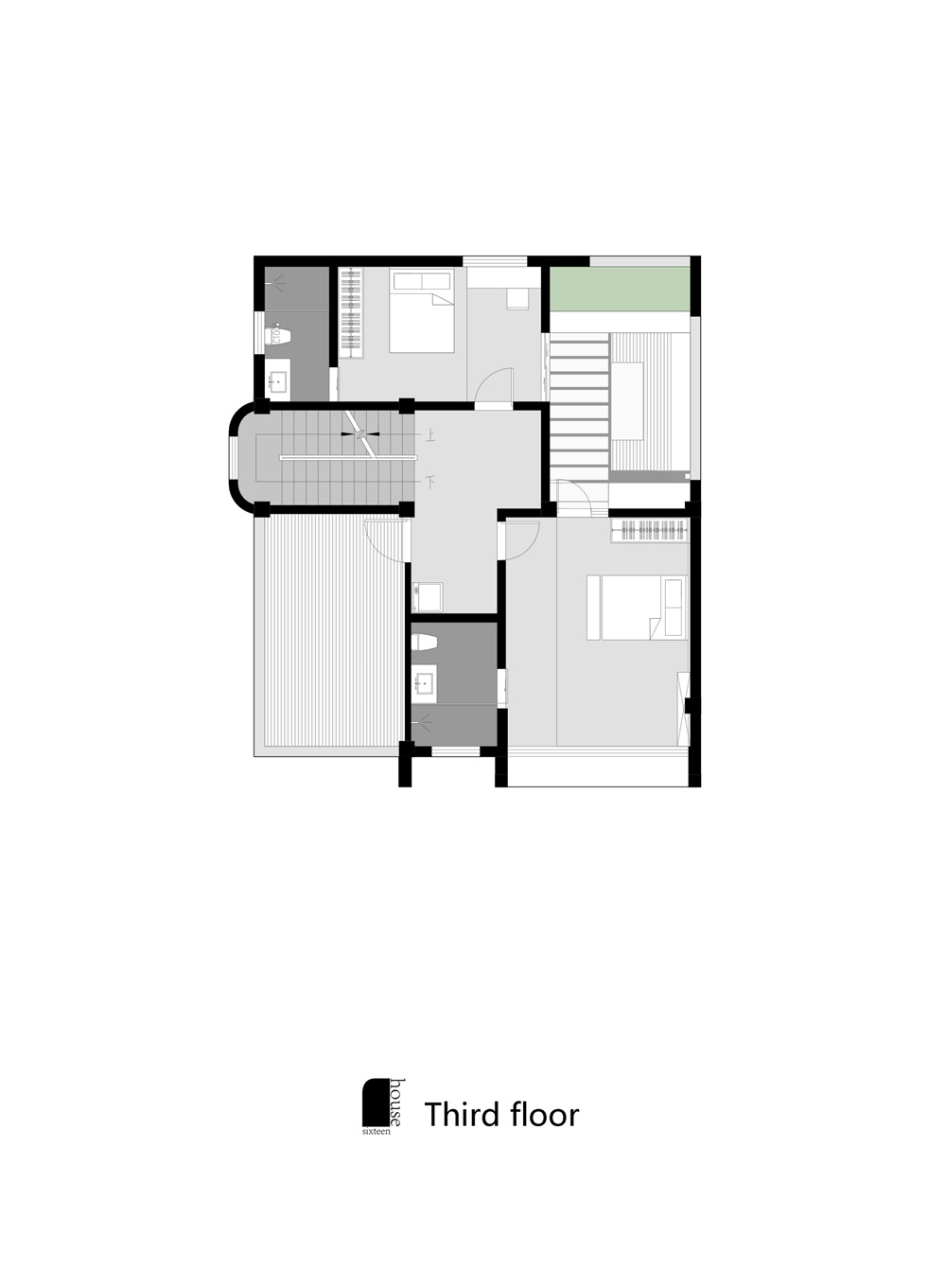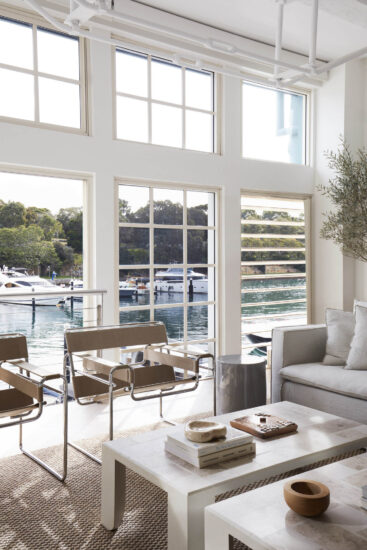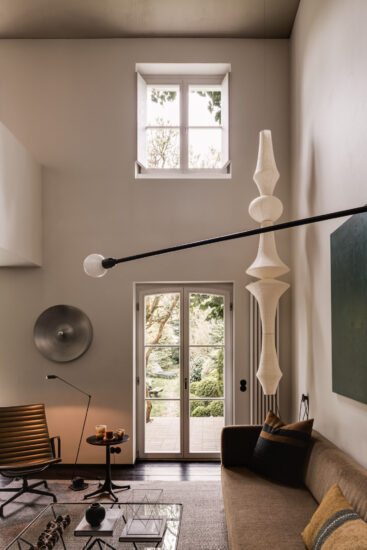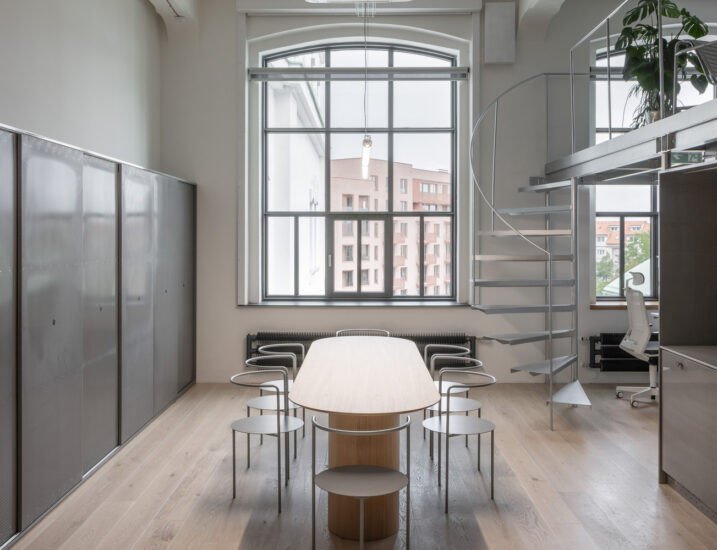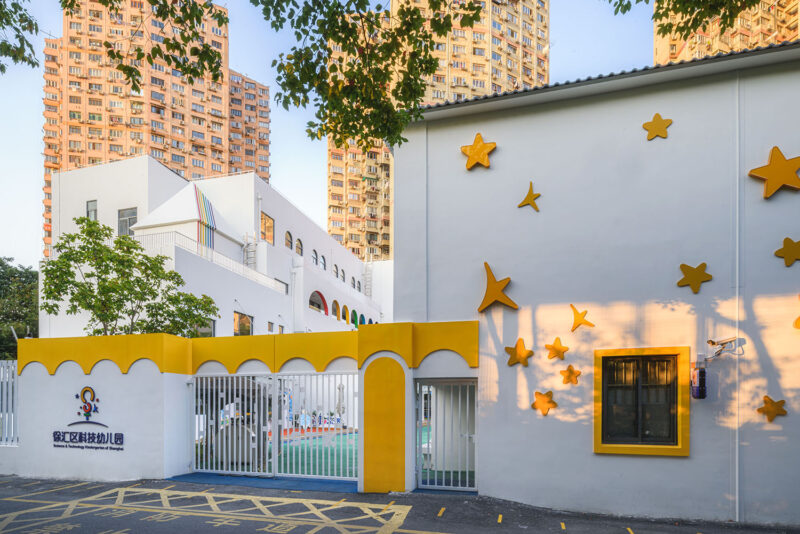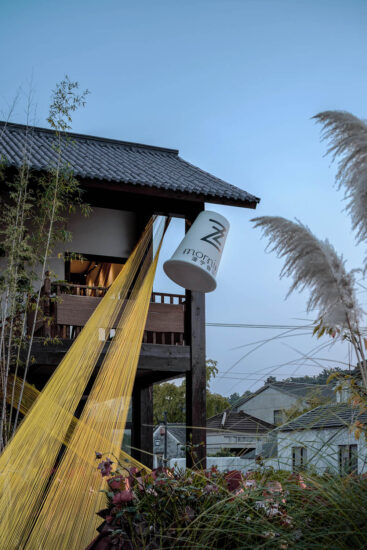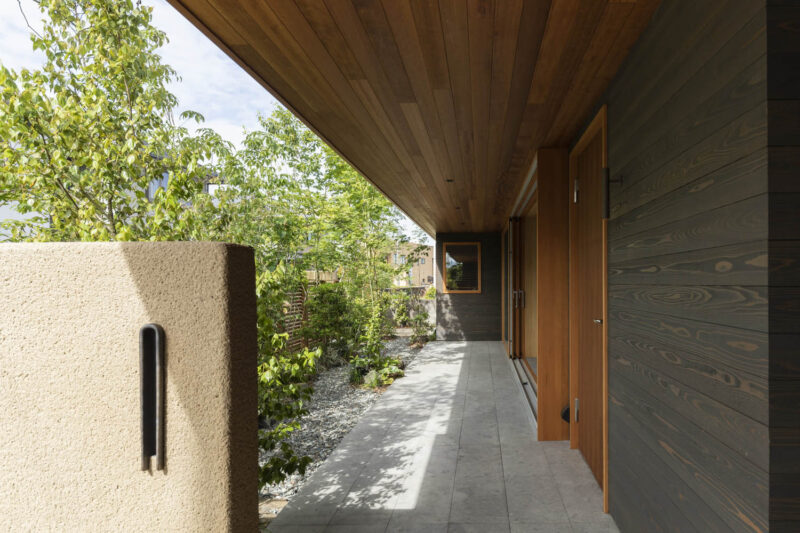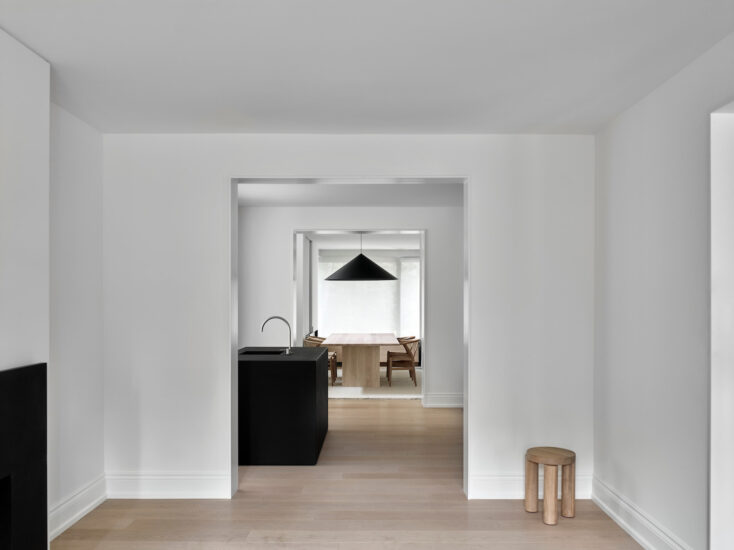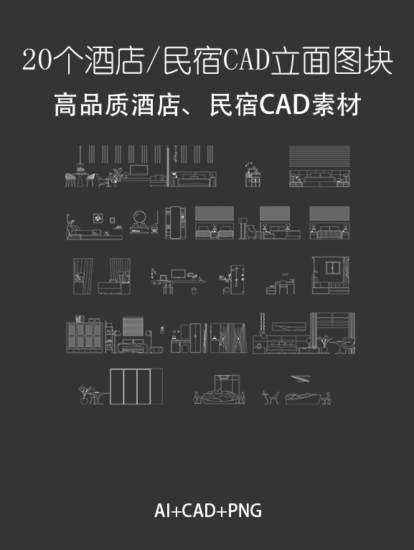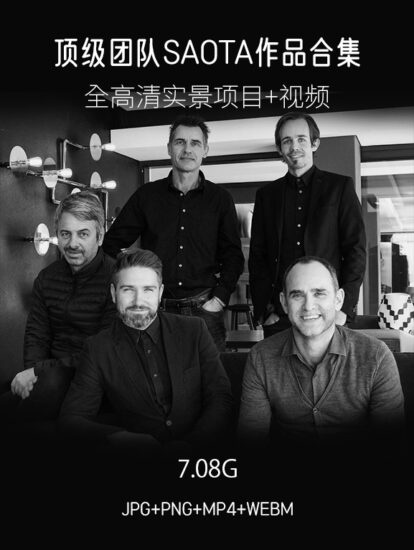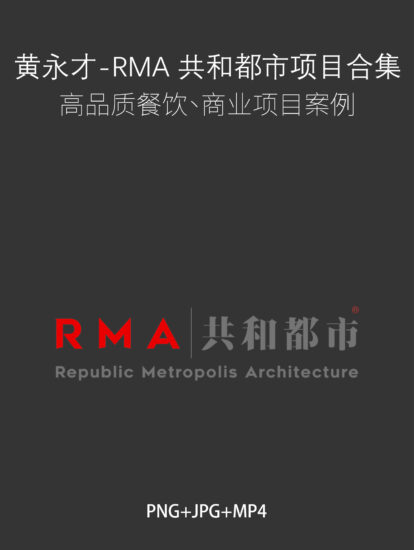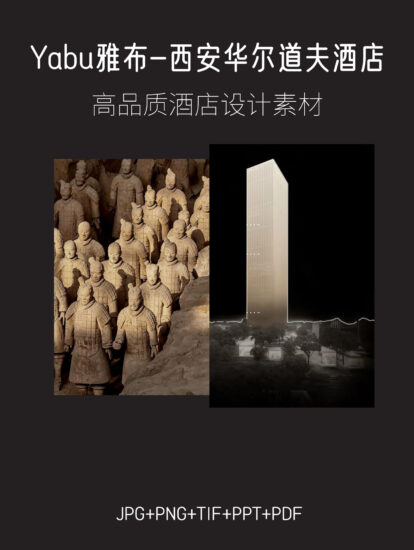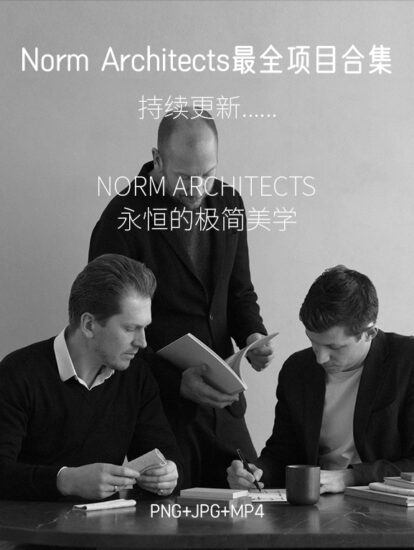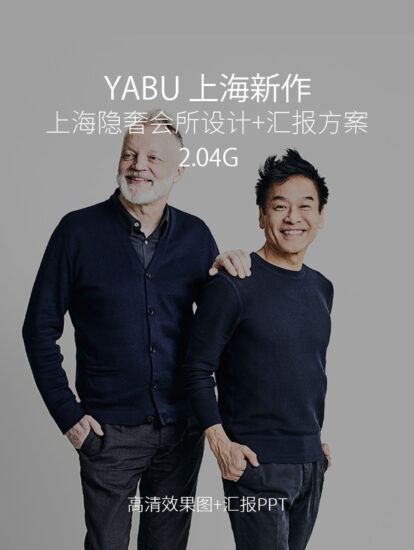LOFT中國感謝來自 月介空間 的住宅改造項目案例分享:
本項目位於中山,原建築是90年代由早期國內開發商建造而成。當時開發商並沒有太多房產開發經驗,以至於落成了一批設計質量較差,同質化明顯的產品。設計旨在對原建築的一種重新詮釋,讓舊宅得以“重生”。
The project is located in Zhongshan, the original building was built by early domestic developers who did not have much experience in real estate development in 1990s, so that a batch of constructions were built with poor design quality and obvious homogenization. The design aims to reinterpret the original building with intention to rebirth the old house.
住戶是三代同堂的一家人。如何將荒廢近30年的房子改造成能適應現代生活的新空間是本案的難題。原本建築格局相對封閉,內部光線昏暗,已不適合當代的居住方式。我們希望整個空間有更多層次,有豐富的彈性空間。
The homeowner is a family of three generations. The difficulty of this case is how to reconstruct the house that has been abandoned for nearly 30 years into a new space to adapt modern life. The original pattern of building is relatively enclosing with inner dimly light, which not for modern lifestyle. We appreciate to have administrative levels and elastic space.
∇ 改造後外觀夜景 the night view of the building
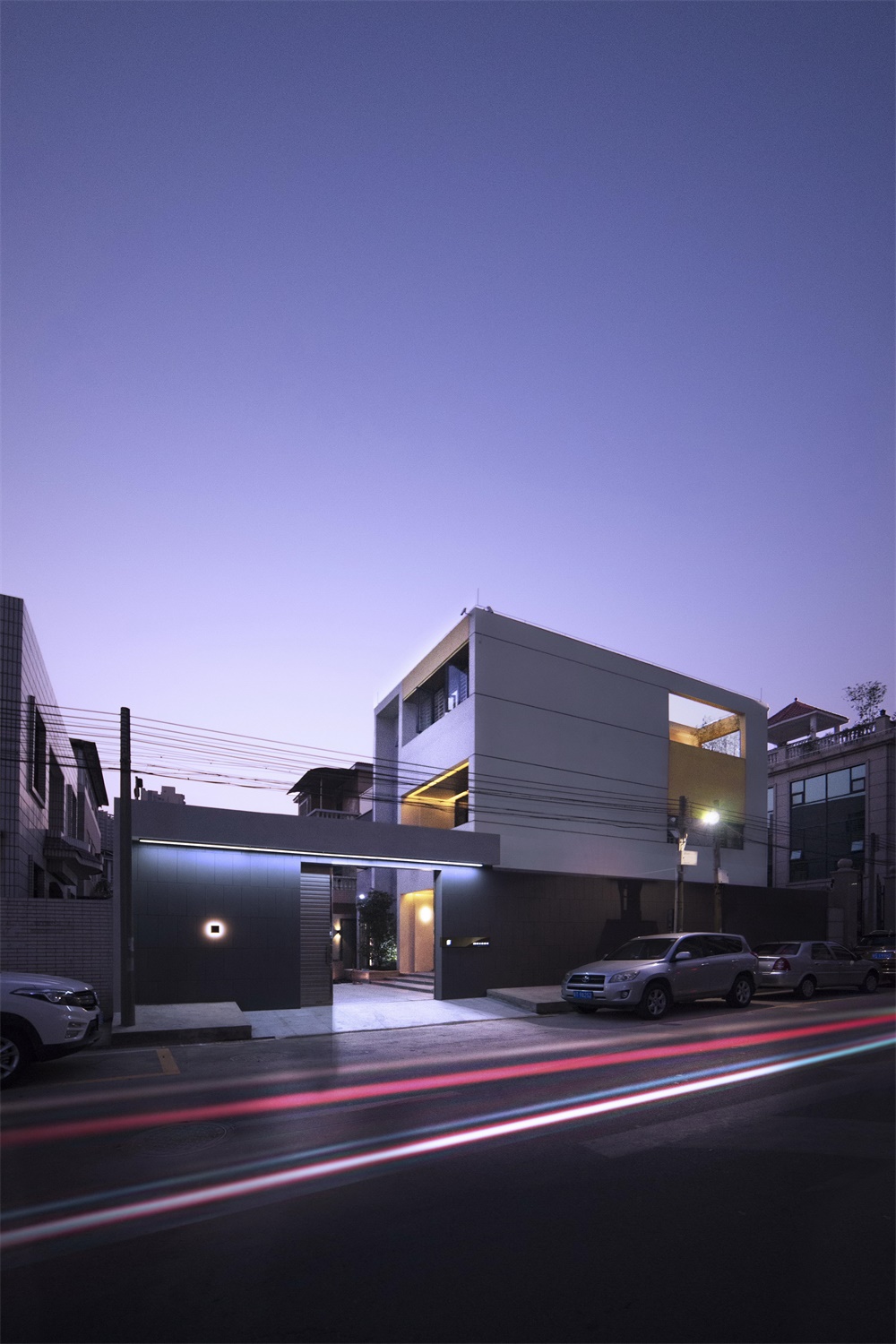
建築設計-建築的立麵設計上,通過重新梳理建築立麵與平麵空間使用的邏輯關係,簡化原本建築的繁雜造型。體量感是我們立麵設計的首要主題,以深灰色圍牆為基礎,淺灰色的體塊穿插形成獨特的入口,強調入口尺度感。從視覺上,白色的建築體通過與圍牆的圍合關係形成橫向體量感。建築體上穿插黃色體塊使建築形成生動的立體的構圖。
Architectural Design – The façade design of the building simplifies the complex sculting of the original building by reorganizing the logical connection between the building’s façade and the use of planar space. Dimension is the primary theme of our façade design. It bases on a dark grey wall with light grey blocks interspersed to form a unique entrance, emphasizing the scale of entrance. The white building forms a lateral volume through the enclosure with the wall visually. Yellow blocks are embeded to the building forming a vivid three-dimensional composition.
∇ 改造後外觀 the view after renovation
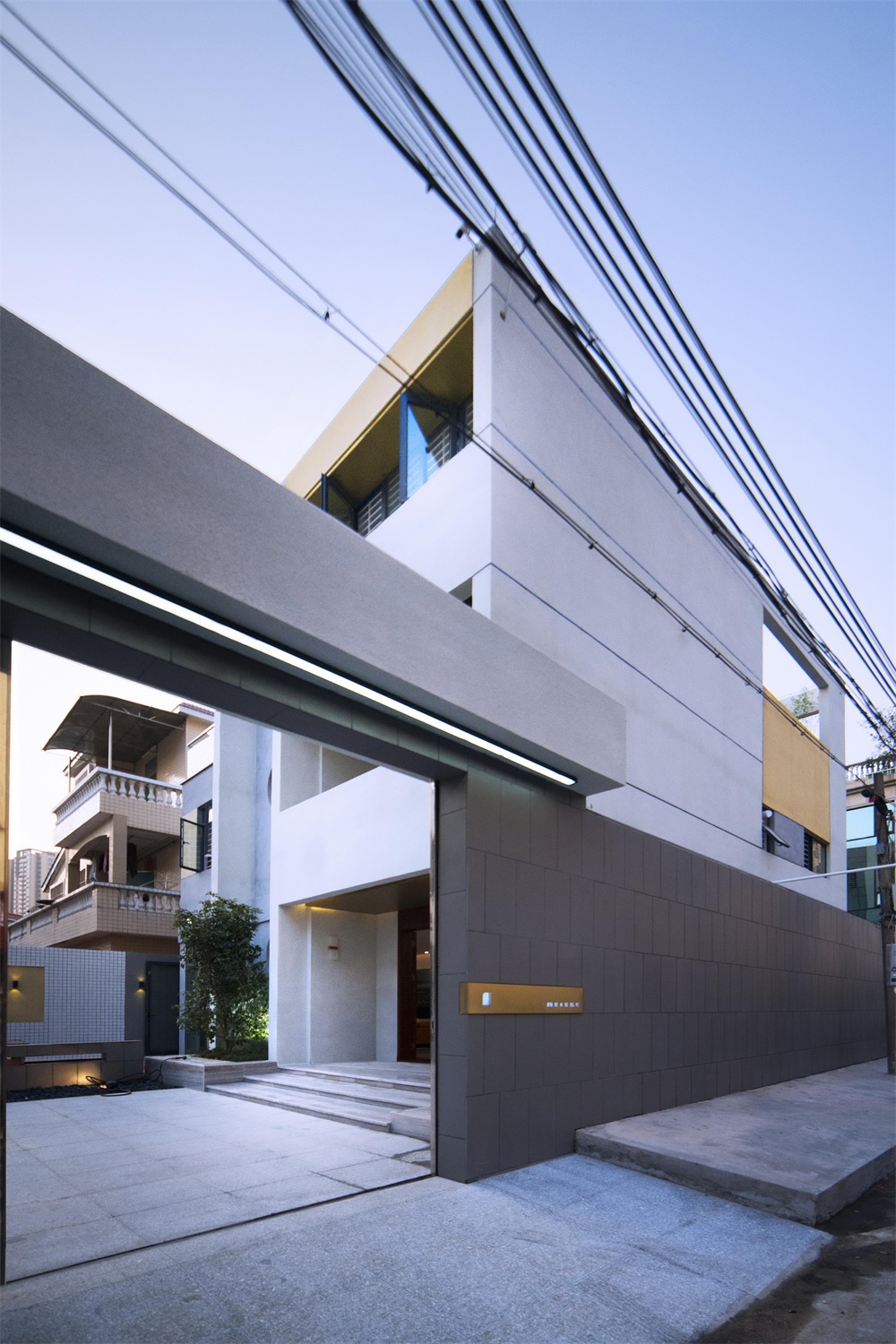
設計對於舊建築並非全部地抹殺,我們依然想保留這個社區和建築的共性,保留僅存的歸屬感。設計元素是我們連接舊時和以後的橋梁,而我們選擇元素是窗戶。我們把舊建築的窗戶歸納出三種類別,分別是圓窗,拱形窗,方形窗。
The design is not completely obliterated for the old buildings, the commonality of this community and architecture would to be preserved, retaining the only sense of belonging. The design element is the bridge to connect the past and the future, while what we choose is window. the windows of the old building were generalized into three categories, namely round windows, arched windows, and square windows.
保留—-舊建築中3個圓窗作為象征意義的保留下來,作為社區和舊建築的記憶;
Retainment—-the three round windows in the old building were preserved as symbolic significance, and as memories of the community and old buildings;
∇ 保留-社區記憶 Retention – community memory
再生—-拱形窗作為新建築的新符號,重新利用滲透到室內外的各個空間;
Regeneration—-arch window is as a new symbol of the new building, re-use each space to penetrate indoors and outdoors;
∇ 再生-元素滲透 Regeneration – elemental penetration
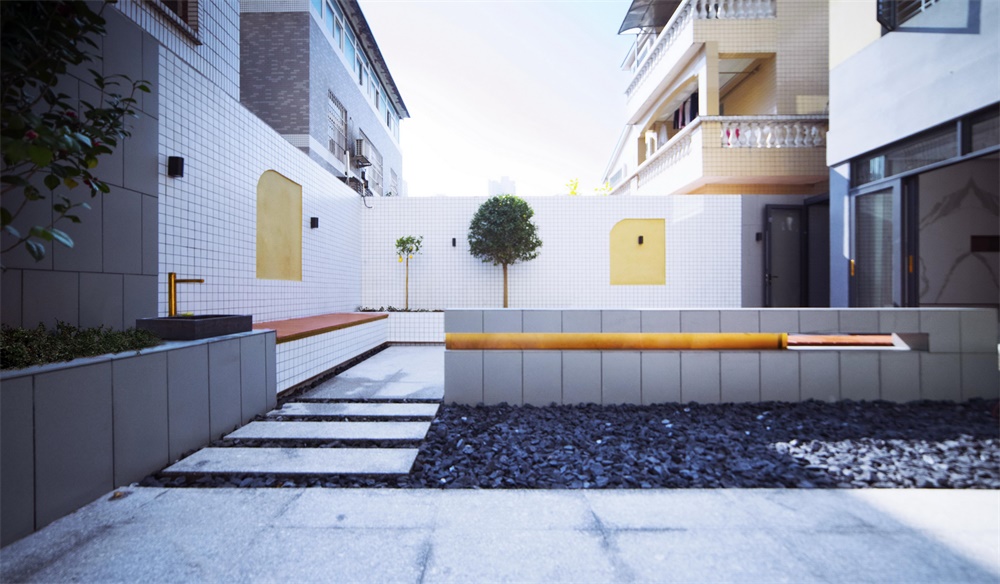
創造—-方形窗則向室外休閑空間的延申造景,創造簡約的景觀空間。
Creation—-Square window creates a simple landscape space for the extension of outdoor leisure space.
∇ 創造-景觀空間 Creation – landscape space
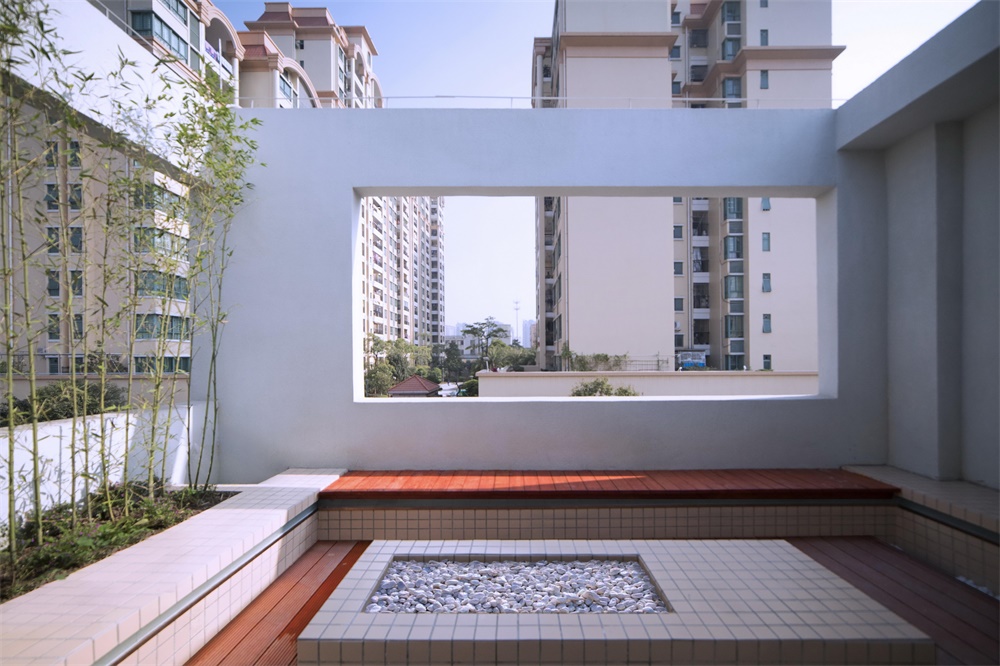
景觀空間-建築所處的街區是相對喧鬧吵雜的,建築築起圍牆的同時,圍合出一方天地。圍牆內有庭院,有愜意,容納了生活所需的所有內部空間與交流空間。設計師希望打破建築內外的分割,讓室內與庭院聯通,人的活動由室內延伸到室外,室內外創造了連續流動的空間體驗。三樓大露台新加建了一間客房,兩個房間共享一個景觀露台。景觀露台並不完全敞開,而是用混凝土形成完整的框架,給人私密感的同時框取了外部景色。
Landscape space – The street where the building is located is relatively noisy, the building is built around the wall as well as is enclosed a private world. There is a courtyard inside the wall, which is cozy and accommodates all the internal space and communication space for life necessity. The designer expects to break the division between the interior and the exterior of the building and connect the interior with the courtyard. Activities extend from indoor to outdoor, creating a continuous flow of space experience both of them. A new room was built on the third floor on the grand terrace, sharing a landscaped terrace between two rooms. The landscaped terrace is not completely opened, but a complete frame is formed using concrete, giving a private feeling while framing the exterior view.
∇ 10庭院空間 ,Courtyard space
室內布局-對原有建築自身潛力的再利用。在不改變原本建築結構的基礎上,對建築進行局部加建整理,對建築內部空間重組整合,形成更加整體簡練的建築空間。並且通過打開了室內空間中不必要的隔牆,打造成了一個充滿活力的流動空間,為住戶在公共空間中的交流和互動提供了更多的機會。同時重新引導和組織光線,創造出一個自然光和人工照明相交織的明亮空間,營造一種舒適的生活氛圍。
Interior layout -the reuse of the original building’s own potential. On the basis of not changing the original building structure, the building is partially built and reorganized, the interior space of the building is reorganized and integrated to form a more holistic and concise building space, it creates a vibrant mobile space that provides more opportunities for residents to communicate and interact in public spaces by opening unnecessary pastitions inside. Redirecting the light to create a bright space interwoven with natural light and artificial light for a comfortable living atmosphere.
原建築首層客廳比較狹小,設計把車庫與客廳打通,形成通透的橫廳。
The first-floor living room of the original building is relatively narrow. the design connects the garage and the living room to form a transparent hall.
二層主臥位置為兩個套房,設計把兩個房間打通。其中一間變成書房,主臥與書房通過半透明的推拉紗門隔斷,形成靈活多變的空間形態。
The main bedrooms are two suites on the second floor, which are designed to connect the two rooms. One of them transforms a study. The master bedroom and the study are separated by a translucent sliding screen door to form a flexible and variable spatial form.
完整項目信息
項目名稱:90年代舊宅改造
設計公司:月介空間
聯係郵箱:mpluslab@126.com
設計年份:201804
完成年份:201901
主創設計:黃衛健 陳秀瑤
技術團隊:阮藝強 黃斌
項目地址:中山市火炬開發區
建築麵積:340平方米
攝影版權:kan
品牌/材料:石頭漆 石材 玻璃 木地板 瓷磚
Project name:Renovation of old houses in the 1990s
Design: M+LAB
Contact e-mail:mpluslab@126.com
Design year:201804
Completion Year:201901
Design:Weijian Huang / Xiuyao Chen
technical team;Yiqiang Ruan /Bin Huang
Project location: Torch Development Zone, Zhongshan
Gross Built Area: 340m²
Photo credits: Kan
Brands / Products:natural stone coating stone material glass wood floor
ceramic tile


